#i think the chinese translation is similar based from the first part?
Explore tagged Tumblr posts
Text
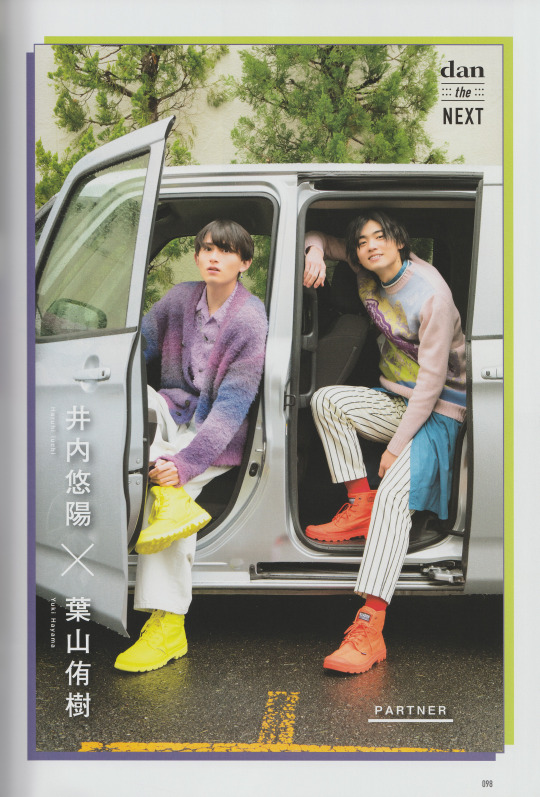

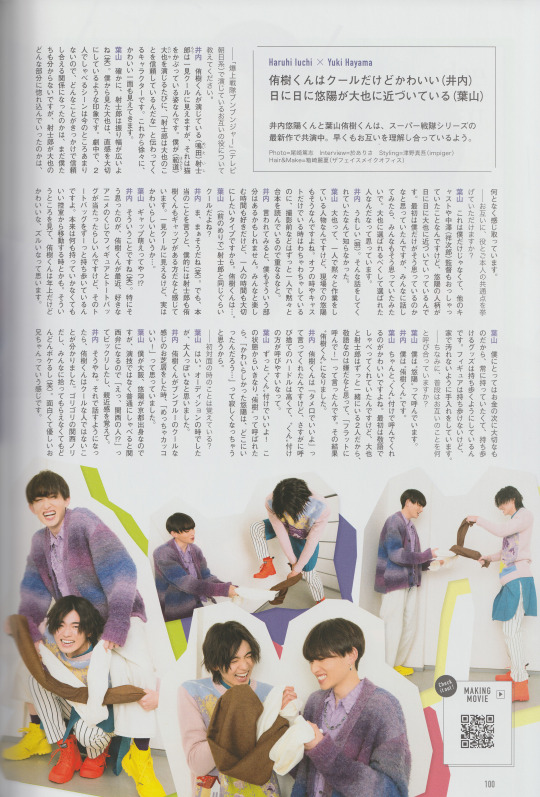
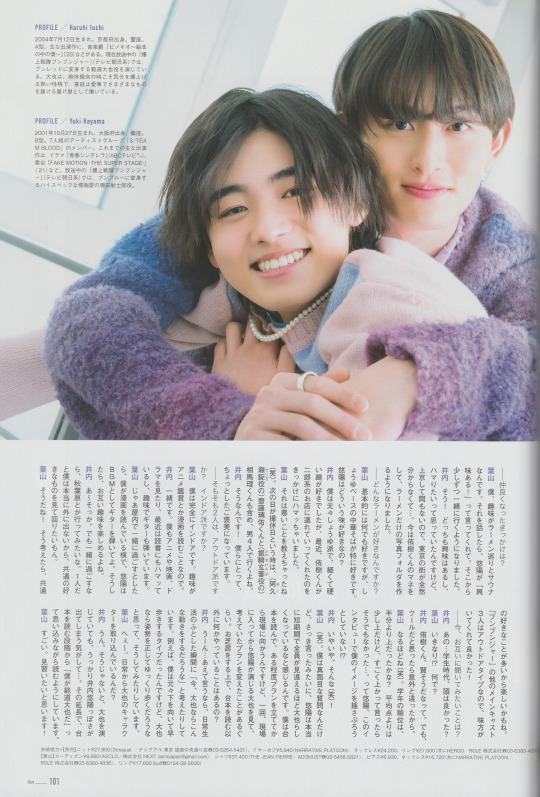
TV Guide Dan Vol.51, April 2024 Issue ft. Bakuage Sentai Boonboomger Cast Members Iuchi Haruhi x Hayama Yuki Interview (translations below)
Publication: April 5, 2024
PARTNER
"Please tell us about the other person's role in Bakuage Sentai Boonboomger."
Iuchi: Ishiro Meita, played by Yuki-kun, may look cool at first glance, but that's just him hiding his true character. Whenever I play the role of Taiya Hando, he's a character that makes me think, "Ishiro trusts Taiya." Going forward, we'll gradually get to see his cute side.
Hayama: It's true that Ishiro has a wide range of emotions (laughs). My impression of Taiya is that he values his intuition. So far, there aren't that many scenes in the show where the two of them talk together, so we don't know what led to their relationship of trusting each other, but I have a vague idea of what part of Taiya made Ishiro fall for him.
"Can you name some similarities between your roles and each other?"
Hayama: This isn't just me, as other cast members and Director Nakazawa Shojiro have also mentioned it, but Haruhi's personality is getting closer to Taiya's day after day. At first I thought I was the only one who thought that way, but when I told everyone, it seems like they think so too. I feel like he was chosen because he was the one meant to be Taiya.
Iuchi: That makes me happy (he's embarrassed). I didn't know you were talking about that.
Hayama: Taiya's a character who works quietly by himself, and Haruhi's the same way on set. During break time or when he's with the cast, he's always in a talkative mood, but before filming, he reads the script quietly by himself.
Iuchi: Now that you mention it, I think I may be like that. I like to spend time with others, but I'm also the type of person who values alone time. Yuki-kun is…
Hayama: (leaning towards him) I'm cool, just like Ishiro, right?
Iuchi: Uh, y-yeah (laughs). But, to tell you the truth, I feel that both Ishiro and Yuki-kun have a gap. They look cool at first glance, but in reality, they're cute…
Hayama: Isn't that just gap moe?! (*being attracted to the gap between one's appearance and personality)
Iuchi: That's right (laughs). In particular, I was amused by the fact that Yuki-kun recently won a figure and tote bag in a lottery for his favorite anime, and he's been carrying the tote bag with him all the time. He even takes it when moving from the waiting room, where you normally don't have to take anything with you. Seeing him do things like that, even though he's older, I think Yuki-kun is so cute that it's unfair.
"How did you become friends?"
Hayama: My hobbies are to go ramen hopping and going to saunas. When I mentioned this, Haruhi said, "I'm interested!" From there, we started going together for awhile.
Iuchi: Right! I was interested in both and wanted to get into them, but I had just moved to Tokyo and didn't know the city at all…Now, I've started to follow Yuki-kun's example, and made a photo folder with just ramen.
"What kind of ramen do you like?"
Hayama: Basically, I like everything, but I especially love Chinese soba with a soy sauce base. What kind of flavor do you like Haruhi?
Iuchi: Originally I was a soy sauce person, and liked thin, hard noodles, but recently, Yuki-kun took me to a restaurant similar to "Jiro" and I became addicted.
Hayama: It might've been a bad thing that I told you about it (laughs). The next time we have a day off from filming, us four guys, including Saito Ryu-kun and Soma Satoru-kun, should go together.
Iuchi: Yeah! It can be like alittle treat for us.
"To begin with, are you two outdoor or indoor people?"
Hayama: I'm a total indoor person. My hobbies are watching anime and reading manga.
Iuchi: We're the same. I also watch anime, movies, dramas, and have recently gotten into reading, I also play the guitar as a hobby.
Hayama: Well, if we were going to spend time together indoors, Haruhi should play the guitar as background music while I read manga. That way we can enjoy each other's hobbies.
Iuchi: Ah~ I see. But, if we were to spend time together, I'd like to go to Akihabara. I don't really go out if I'm alone, so I'd like to look around at the things we share a similar interest in.
Hayama: Alright! Come to think of it, it might be fun since we have so many things we like in common. The other three main cast members of Boonboomger are outdoor people, so it's good to have people like that by our side!
"What's something you'd like to ask each other?"
Iuchi: Ummm��when you were a student, were you smart?
Hayama: So suddenly?! why?
Iuchi: Yuki-kun, you seem like a smart guy. However, when I thought you were cool, you turned out to be surprisingly different.
Hayama: I see (laughs). I think my grade level was above half? It was alittle above the average score, but it wasn't really that high…wait, Haruhi! Are you trying to ruin my image with this interview?!
Iuchi: No, no! I'm not! (laughs).
Hayama: (laughs). This is going to be a serious question, but as I mentioned earlier, I feel that in a very short period of time, Haruhi has become more and more like Taiya, and that everyone views him as such. I read the script and make a certain plan before going to the set, but once I saw the way that Haruhi played Taiya after I got there, I changed my plans. When acting, do you do anything in addition to reading the script?
Iuchi: Hmmm…If I had to say so, I'd say that at random moments during my daily life, I think to myself, "Taiya would make a move like this right now." For example, I've always been the type of person who looks down while walking fast, but I think that Taiya would straighten his posture and walk slowly, so I've been trying to do that.
Hayama: Heh~. So, Taiya's character is taken from daily life?
Iuchi: Yeah. Otherwise, even though I'm playing the role of Taiya, I feel like I'd inadvertently come off as Iuchi Haruhi…As an extension of that, from the moment I read the script, I try to read it while keeping in mind that, "I'm Taiya Hando."
Hayama: Amazing. I'd love to learn from you!
#heated drama between men in every way#bakuage sentai boonboomger#boonboomger#super sentai#taiya hando#hando taiya#ishiro meita#meita ishiro#my scans#my translation#tv guide dan#yuki hayama#hayama yuki#haruhi iuchi#iuchi haruhi#tokusatsu#toku cast#super sentai cast#interview#💙❤️👀#my heart almost exploded from how cute they are#everyone keeps dunking on yuki/ishiro for being uncool#he's cool 😡...but also very cute 😳
168 notes
·
View notes
Text
LMK VS Legend
The Guardians of Knowledge
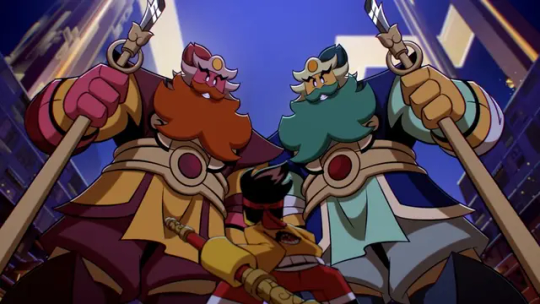
I know that in the show these two are just call the guardians of knowledge,but after an interesting find I THINK I know who that actually are and if this is true it might make season 5 more interesting or not be effected based on the shows perspective, hope you enjoy.
LMK:
In the show these two dont get much screen time they are not given names either. They act as both guardians and keepers of knowledge. They have the physical and vibe of a celestial being. But they actually seem to be more librarians they say that knowledge is for everyone you just need a card. (Hilarious)
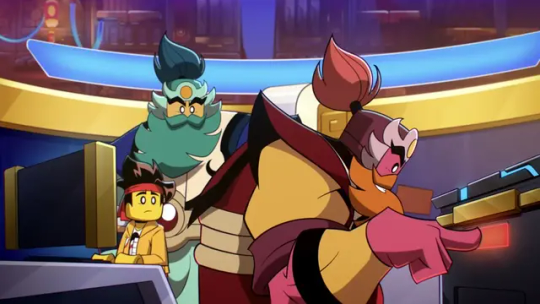
Their home the cloud seeming to be a magical /technological connected place out in a desert it’s very hard to tell its location the cloud glitch and the place has a lot of sand around.
These two look like giants but don’t have the size they have the coloring of demons but no horn or fangs but they could be hiding it. They wear what seems to be celestial armor but Azure wore some two along with Peng and Tusk. so there demos that wore them if they worked for the celestial realm.
Legend:
Who, I think these two are actually interesting I think they are Qiānlǐyǎn (Thousand-Mile Eyes), and Shùnfēng’ěr (Wind-Following Ears).

Does this seem similar to anyone?
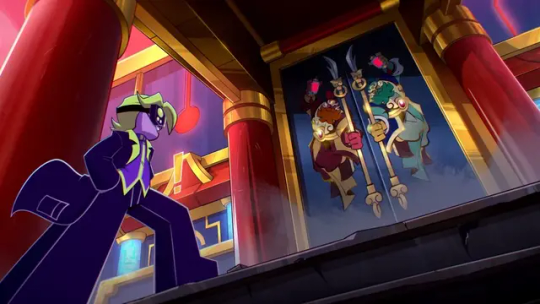
It's very similar to the door of the cloud. Two brothers in a special pose holding golden weapons and wearing golden clothes, One is red while the other is green. "One is usually depicted as a green demon with large all-seeing eyes. He keeps a weather eye on the horizon, scouring the sea for sailors in need of the sea goddess’s assistance." that is the main physcill description of each of them. They don't wear the right headband but that could be explained because the image of the statue is from Taiwan, not China The two are normally depicted wearing "flowing clothing or open armor to show off their muscular physiques. Apart from their divine sashes, they are commonly shown wearing golden armbands, bracelets, and/or anklets, as well as a tiger skin at the waist." These traits appear to be consistent with all other examples I've seen. Some of these missing parts could been the show's decision. Remember I'm just speculation not stating.
Qianliyan is a Chinese sea and door god. He usually appears with Shunfeng'er as a guardian of the temples of the sea goddess Mazu. Qianliyan's sharp vision is employed to help protect sailors at night and during fog and other inclement weather.[12] In some accounts, he is capable of seeing everything in the world. Qianliyan typically appears as a green-skinned demon shielding his eyes from the sun's glare.
Shùnfēng’ěrThe god's role in helping sailors distinguish favorable winds also prompts the translations "Fair-Wind Ears"[3] and "Favorable-Wind Ears" In some accounts, he is capable of hearing everything in the world, no matter how quietly spoken, and was therefore also worshipped as a witness and guarantor of oaths and contracts. Shunfeng'er typically appears as a red- or brown-skinned demon cupping a hand to one of his ears.
Both demons depicted in art have a hand raised to a part of their heads or faces which is also similar to the Guardians of Knowledge Door mural.
History:
The brothers "Thousand-Miles Eye in the disguise of a lovely girl, lures men into a cave and then devours them. When With-the-Wind Ear sees this, he starts a fight with Thousand-Miles Eye, but in the end the two monsters pledge to become sworn brothers. Guanyin, seated on Mount Potala, orders the Dragon’s Daughter to tell Mazu to subdue the monsters. With the heavenly warriors helping her, she was able to defeat the two. After that, the two become her loyal servants. First, they help Mazu fight a man-eating lion, and subdue the Evil Dragon Monster Later down the timeline of their legend they would reach the JTTW.
JTTW:
That's right these two were in the JTTW you might have recognized their names in the being for t eJTTW readers if you remember them great for those who don't they were the ones that announced Wukong or just Stone Monkey at the time of birth they were sent by the Jade Emperor to find out why his place got set on fire from two laser beams. They are depicted as personifications of the Jade Emperor himselfs' own hearing and sight. That was why I was saying it would maybe be entering in season 5 if the Jade Emperor is gone and they are a part of him does that mean that they're gone?
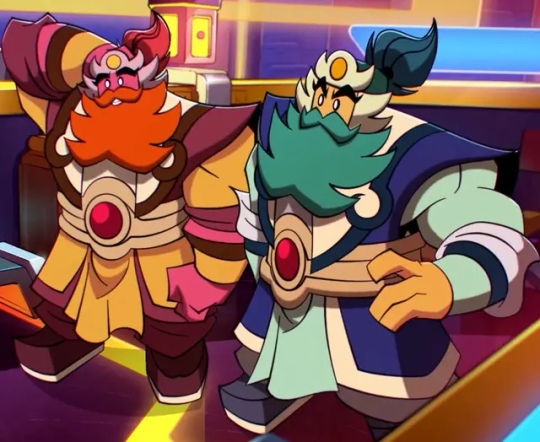
But then again the show might not have gone that route they have changed a lot of the mythology of the original novel. They could have changed that as well I could not see the Jade Emperor personification of two of his senses living on the mortal plane and as kind-loving librarians or ones that play video games.
Notes:
That along with their origins and roles originally based around the sea why in a Desert and Why Librarians, I could see the show editors taking more of the JTTW versions and seeing the beings that personified ears and eyes they must be involved in knowledge right. They can see and hear everything in the world they must be knowledge-based beings.
Also, everyone else in the show so far has some sort of JTTW connection somewhere. The two must follow that formula.
But if I'm right then these two were literally the first ones to see newly hatched Wukong. So many questions.
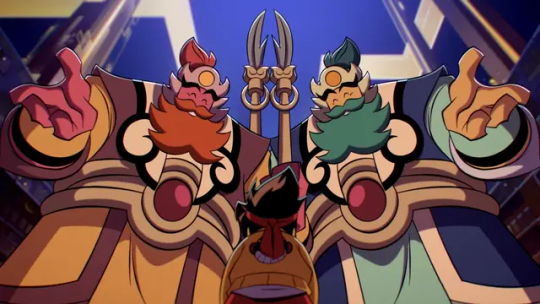
Thank you
Hope you enjoyed :)
PS: how I thought of this well I was watching VR gameplay of
The Pirate Queen: A Forgotten Legend
And I saw the red and green statues of the two demons and thought "WAIT............ Hold up.........deja vu ......is that you?!"
115 notes
·
View notes
Note
I dont think youve gotten an ask like this before since this is an om! blog and all and this is possibly gonna sound weird or dumb of me to ask a german native this, but how hard is your grammar really?
Reason (1-1) for my question: languages are my guilty pleasure. I'm only fluent in arabic and english rn but I wanna learn as much as I can, even if just basic facts, not a language itself
Reason (1-2): people learning german insist that the grammar is "brutal" especially for english-speakers but frankly it kinda feels that theres exaggeration or a "trend" along the lines of "german grammar is impossible because everyone says so" even if it's not THAT gory, yk?
Any new language IS gonna be hard at first- thats a given. And some languages like arabic / chinese / japanese / korean are listed at the top for difficulty. Ik that german grammar has many many rules and has exceptions... Linguistic sites say thats a reason for its complexity and the majority of learners agree with "yeah it's too difficult"
But tbh?? Idk
At this point it feels like a stereotype that was based off facts at first but then got negatively exaggerated?? I think yes german grammar is more "detailed" than the english norm / other grammar rules but it isnt monstrous like whats being often said and spread about it?
Thats why I wanna hear an authentic objective thought on this from a german if you dont mind🎤
hey there!
i really don't think German is one of the most difficult languages to learn. if you're an english native speaker the things you might struggle the most with are:
- pronunciation (harsher sounds, less soft than english, äöü sounds. when you have someone who can correct you this isn't as difficult to learn)
- grammar (lots of rules and lots of exceptions as well. words are gendered with der, die, das /feminine, masculine, neutral. also learning how to decline words can be tricky as well, but i think that just comes down to memorisation and practice)
- the sheer volume of vocabulary. a lot of words are HIGHLY specific (which is the fun part to be honest. there's lots of german words that are difficult to translate to english bc of this. an example would be the German word "doch" which is something similar to "yes it is" or "is not, is too")
i can imagine the difficulty level might be similar to learning french (at least from what i can compare). honestly i can only judge this so far, at work i do have lots of people around me who are just starting to learn the language, these are a few things that i saw them struggle with as well.
i think it mostly comes down to dedication and interest. you do have to put in a lot of effort, but you obviously have to do that for every language.
i think German gets a bad rep for sounding harsh and brutal, but i think it sounds quite beautiful. here's a little comp of German words i appreciate.
Nickerchen - nap
Maus - literally means mouse, but more recently has become youth slang. you can call someone "eine süße Maus" / literally a cute mouse / when they did something nice for example. Maus is originally gendered female = die Maus, but is used in a gn way like this. Meine Follower sind zum Beispiel richtig süße Mäuse 🥰
also used as an adjective (mausig)
Fremdschämen - being embarrassed for someone else. Wenn ich sehe, dass Lucifer redet als hätte er drei Wörterbücher verschluckt, schäme ich mich fremd.
unschön - unattractive, unpleasant. this one isn't special but it's my morally acceptable way of saying "well that fucking sucked" at work. Das ist jetzt aber unschön verlaufen.
so yeah! if you want to learn it don't let the naysayers stop you!
18 notes
·
View notes
Note
Hi! Same anon here! Don't worry I barely sent the ask like a day ago :P
Thank you for giving such a detailed answer! I gotta say, I never considered the Ds to be akin to plants (I did think of them being the chinese equivalent to kamis tho, I think the term was xia?) but I can see what you mean by that, maybe like trees? I like the idea of sentient sacred trees taking on human forms, wouldn’t it be cool if the "real" Tsuki-hime was one of their kind?
In a less serious note, when I read the plant part, my dumb ass brain started to think about Trigun, and Vash as a plant being in his universe with completely opposed ideology to the Ds, the one of unwavering love and faith in humanity despite most humans in Trigun being far worse than any of the literal evil ones in PSOH, and what would happen if they ever met :'D
Also, do you have any theories on why our D was sick and apparently needed a transplant of some sort? Personally I always thought that he may have been born "flawed" either due to their kind's equivalent to genetic degradation on their biology, or alternatively a literal manifestation of the ideals conflict between Sofu D and Papa D? Both?
Sorry if I ask too many questions, I had no idea PSOH had a surviving fandom until the 7seas announcement!!
huh. you know. i was fairly sure the term kami had been mentioned in at least one of the translations but i just checked the last two chapters in both and apparently not? though the el dorado chapter seems to confirm the meaning if not the name when it mentions the touch of a "dying god" and accepts d's blood, at a minimum; i'm not sure if the japanese original text uses the word "kami" either, but it's possible.
anyway, i've been kind of going with the assumption that they're something similar to that - not exactly gods in the western divinity sense, but more like beings of the land. i probably absorbed the term kami in regards to the Ds from fandom, but now that you mention it, it doesn't make all that much sense since he's chinese. the term in question in chinese seems to be "shen" (written with the same character) but it doesn't appear to be an exact equivalent in terms of meaning. i'll have to look more into it!
yeah the plant thing for me comes from several occasions generally associated with d and life/death (as mentioned before, the gattolotto extra, d entering a state of despair, d's blood turning into rare plants when he's running from vesca, d being taken over by plants when falling into despair, the plant core of the papasplosion) and also from the hilarity of leon only ever getting anywhere with a lady if they're plants (as per the flowers and the detective extras) and d lowkey also being one and following this trend 😂 though that latter bit is more the shipper goggles than anything lmfao

BUT!!! MORE IMPORTANTLY!!!! *rubs hands together* you fool! you just activated my trap card when it comes to talking about d's illness and all issues surrounding it! i love discussing this topic and poking fun at the tokyopop translation and putting up a murderboard full of red string for theories!
okay so the first thing you need to know is that the tokyopop translation took some. liberties. and is not entirely accurate. they seem to paint papa as far more of a villain and sofu as far more of a saint than they are, for one, and an important implication about d's health kinda goes in the wrong direction based on this. as such, if you only read the tp translation, you may be caught off-guard by some of what i'll say below.
once again under the cut because i'm a rambler!
things we know about d's illness:
needs sugar to keep from getting faint/dizzy
extremely low endurance at times (which makes leon think that he might have a heart condition) that either triggers or is triggered by his illness, as per the dragon chapter
may or may not be related to his eye (either as a symptom or a cause)
some sort of pain attack is involved? in the donor chapter we see him hover his hand in front of his throat, though it might be while it's in motion to go elsewhere, such as his heart (the dragon chapter has both the highlights near the throat, but the hand placed by his heart/lungs)
papa mentions to the pseudo-sister that d's body was "born incomplete" - whether this is true, he thought it was true (more on this below), or it was a simplification for her sake (as she had the mentality of a child) is not clear
d apparently is lacking several things, or they are in the process of failing (also as per the donor chapter). THAT BEING SAID, there is an interesting point here
needs sugar to keep from getting faint/dizzy
may or may not be associated with his eye
some sort of pain attack is involved? in the donor chapter we see him hover his hand in front of his throat
the illness has been present for at least several years, presumably for as long as d can remember (though not necessarily from birth; more on this later)
papa has been studying and trying to cure this illness also for years
after d drinks a "medicine" processed from the orangutan hybrid's body the symptoms seem to stop - i'm pointing this out as more of a curiosity thing, because on other occasions d couldn't as much as eat fish flakes without some ominous remarks about his bloodlust almost awakening again or something of the sort (you'll excuse me if i don't go looking for this particular quote right now)
papa mentions to the pseudo-sister that d's body was "born incomplete" - whether this is true, he thought it was true (more on this below), or it was a simplification for her sake (as she had the mentality of a child) is not clear
d's body had several things apparently lacking or in the process of failing (also as per the donor chapter). THAT BEING SAID, there is an interesting point here

this post from one of tumblr user @chaikat's psoh liveblogging japanese translation notes (several of which you'll see me mention at other times in this post because the info in there is just THAT crunchy) points out the following:
When Nue Erh says she’ll give D what he lacks, the part where she says “my eyes” in the eng version is actually specifically “this eye” in the jp version.
keep this quote in mind for a bit!

and now, back to the revelations of the final chapters!
aka, the panels that give me fucking brainworms:

uh??? hello??? one could understand that endless asexual reproduction of the same being through centuries would eventually result in mutations, and in fact it was under this assumption that i laboured when i first read psoh, but this conversation points to a different cause entirely, originating from sofu's interference.
doesn't help that the tokyopop version is wildly different, too:

tokyopop's version doesn't seem have anything to do with either d's illness or eye whatsoever, alas 😬 and considering several of their past instances of mistranslations and ad-libbing on this manga, i'm far less likely to believe their version of events.

another detail i didn't notice on my first go-arounds: the fact that the first words sofu d says in response to papa's accusation imply that the undertaking of q-chan's form took a sacrifice, and that this is related to d's eye. it took me this other translation notes liveblog post to realize that the two things were connected, since there's an entire other page with side-comments in the middle breaking up the dialogue flow.
ANOTHER most excellent thing that chaikat's commentary brings up and that i haven't seen on either translation is that sofu specifically mentions using the eye, or the term yorishiro:
(small text above Grandpa D): I borrowed one eye for the yorishiro.
i cannot claim to be even remotely close to an expert on shintoism, so here's a quote from wikipedia (which might or might not be correct) regarding yorishiro:
Yorishiro were conceived to attract the kami and then give them a physical space to occupy to make them accessible to human beings for ceremonies
i'm not sure if sofu d used it as this exact purpose, or if there's any sort of tradition in manga to lend it a slightly different meaning (jshk for example uses it as an artifact that stores the powers of the being connected to it, and something similar to this would make some sense to me here since he's shifting into a different form and putting his powers/presence away). either way, sofu has definitely used at least a portion of d's body for his own purposes without consent, so we cannot discard him using more.
*puts tinfoil hat on* it is at this point i bring up our precious orangutan sister's words again! she's listing the things she was made to replace in d's body, with the specificity of one singular eye. coincidence? i think not! i'm not entirely sure i agree that she means the left eye as considered in chaikat's post, but as an exercise let's think up the motivations for both possibilities:
replacing the left eye (purple, papa's colour): implies that the eye that was interfered with by sofu has bypassed the illness, and d's original one remains imperfect and bound to deteriorate; implies also that papa/sister know that the right eye is not a concern when it comes to d's health situation, which does track with papa's later accusation
replacing the right eye (gold, sofu's colour): implies that something is wrong with that eye, in ways that go far beyond the bounds of d's illness, since the original one would be okay to leave as-is; since papa is aware that the gold eye was caused by sofu, it would make sense to want to replace it due to both his resentment for sofu and concern for d
it is also worth mentioning that sofu never seems to have devoted any time to trying to cure d's illness, unlike papa (who was deemed incapable of raising a child by sofu, which may or may not be true), and that his reaction to the death of both his son and stray animals in a forest fire is to not even blink twice.
sofu having removed d from papa's care, mixed with d having mismatched eyes as a child under sofu's care, and the fact that we don't really see a mention of q-chan being around at that time make me poke interestedly at sofu d - because even if you buy that he *checks notes* only traded his grandson's eye to turn into a tiny cute creature in order to keep an eye (heh) on him, that doesn't really... track with the timeline of when he actually left d alone and had cause to become q-chan? which makes me wonder what sofu's actual use for the eye was, since he presumably had it since d was around-ish maybe five years old. (remember me saying "for as long as d can remember, though not necessarily from birth"? yeah.)
does this mean that he caused the illness? probably not, but fun to think about in connection to everything else! especially because the main point i'd expect d to ask when papa mentions the mutations/changes resulting from the inumerous replications of the d line would be his ?now-cured? illness, but what he does actually ask about is his eyes, despite papa and sofu - supposedly perfect clones - also having eyes that differ from the other (papa's being purple, sofu's being gold). one would think the illness would be the priority, but no! unless the two things are connected, and-- *continues to add red string to the murderboard*
anyway this is the theory i find the most fun to play with!
slightly less unhinged ones would probably be just. you know. normal replication mutations and genetic degeneration and stuff? or if you go with the tokyopop translations and i remember correctly, there are some implications that papa experimented on d before sofu took him away, but take that with a grain of salt. another thing that comes to mind is also the alice/daughter chapter, where after several generations the resulting rabbits were killed by the sugar and stuff consumed by the original generation - it could also be something like that, because since they're clones their bodies wouldn't have changed to adapt to the times, different foods, different air quality, etc, which would translate into poison for the newest generations.
i hope i didn't go too far down the theory rabbit hole, oops! 😂
#petshop of horrors#pet shop of horrors#psoh#psoh meta#count d#sofu d#howl rambles a lot#howl replies to stuff#awesome anon is awesome
10 notes
·
View notes
Text

yapping about how i approached translating karamatsu's brand new world. just discussing the localization liberties i took and other things i think are interesting. i just love yapping sorry
part 3/4 because i forgot about tumblr post image limits lol
CHAPTER 8


as you probably know if you watch anime, in japanese they say いっただきまーす before they eat a meal. english has no colloquial equivalent so they usually just translate it as "thanks for the meal!" because something like "down the hatch!" comes off as quite goofy and old-fashioned. luckily, THESE characters ARE goofy and old-fashioned, so i get to use it.


if it were solely up to me i think "cuz I'm the oldest" would've been a more natural english-speaking sibling thing to say here. but source material LOVES saying eldest so i left it as that


todomatsu says "you're kicking up dust" here. this is where cultural knowledge in translation is important.... i just kind of assumed that this is colloquially used the same way as "making a mess", but im not actually sure, this was just a guess. so i wish i had that cultural knowledge lol


admitting my weakness: i have no idea what bro was talking about here. i made my best guess based off what nonsense i could glean from this as well as the chinese fantranslation. sorry


admitting my whimsy: i had no reason to localize todomatsu into talking annoyingly here i just kinda wanted to. sorry
CHAPTER 9


the dialogue here is more literally "The one who showed me that was--". this doesn't sound that unnatural, and i probably could've stuck with it (if it was song lyrics i definitely wouldve gone with that lol), but i thought "something I learned from--" felt a bit more natural of a sentence to be cut off (i feel like an english speaker would say "ichimatsu was the one who showed me that", y'know?)




in the first panel, ichi says "let's go/return home". but it doesnt fit in this itty bitty speech bubble, and also is not quiiite as colloquial in english? (in this kind of casual context i think it would be more like "let's head out" yknow :?), so i just did "let's go". but then later he literally does say "let's go", which i can't use again, so i shifted this to "c'mon!" even though it's slightly less faithful of a translation for that phrase... but it's for da sake of the overall meaning. welcome to da translator's dilemma


personal pronoun moment! though the karamatsu we know and love uses オレ, a confident and bold personal pronoun, high school karamatsu uses 僕, a polite and reserved pronoun. again no english equivalent so this kind of subtlety in characterization is just kinda lost foreveerrrrr and needs to be made up in other ways


(as a side note ichi uses the same おれ pronoun in hs as in the current day, though. it fits his casual, laid-back high school personality and also his current low-energy, slacker personality. da versatility. very interesting)


a little look into my sick and twisted mind process
"remaining empty / will you be this way forever?"
remaining is too long to fit in this speech bubble, so im shortening it to "staying empty"
"will you be this way forever" doesn't sound very natural to me. "do you plan on" feels more direct and accusatory (as asserted by ichi's use of よ here) so let's use that
"do you plan on staying that way forever?" is a very nice sentence! but i already used "staying" in the first speech bubble. curses
the last thing ichi asked was "why are you still alive", and is about to say "just die", so i think bringing back "living" here wouldn't be too off-base, right? it's a similar meaning.... even though it wasnt insinuated in the text.....
it's fine no one will know


this translation is from the source material. but a bit of potential double meaning here that maybe was lost: 逆に means like, "on the contrary" or "conversely", so can mean something closer to, "(if you just plan on staying empty), you might as well just die instead!" which i think is a slightly different vibe than "actually" and is also neeeat
okay one more part to come just for chapter 10 i guess
part 1 / part 2 / part 3 / part 4
7 notes
·
View notes
Note
All right! Fine! I’m in! Can you recommend me your favorite fic in the non-hobbit fandom that you post about a lot? I’m not familiar with it all so a fic that explains canon a little more than an a total AU would be best
No biggie if you don’t want to recommend any hahaha just send me on my way with a ‘no’

Yes! Join us! You must be referring to The Untamed, which is a Chinese drama based on a web novel translated into English under the name The Grandmaster of Demonic Cultivation. It has a lot to recommend it to Hobbit fans! Swords! Legendary monsters! Do you like that scene in the Fellowship of the Ring where the hobbits stumble across the ancient tomb and are almost laid to rest by a barrow-wight, but come out with the Numenorean blades? I have good news about both leveling up weaponry in graveyards and ancient tombs!
If your preferred way to enter a fandom is a fic rec, I have to say A Narrow Bridge by JoLaSalle and FrameofMind is my current favorite. It's a Fix-it-AU that tells most of the early canon through flash back scenes while diverging wildly. I'd say it goes into even more detail than canon about how some aspects of cultivation and demonic cultivation works. Moreover, it has a *lot* to appeal to Hobbit fans. "How do you feel about pastoral novels?" she asked knowingly. Please enjoy two devoted, justice-loving idiots growing radishes in a graveyard, zero feet apart because they are in love.
Okay, so A Narrow Bridge is 700 thousand words. A big part of the appeal of this fandom is how many incredibly writers go for sprawling, epic AUs. There is a library here waiting, if you find you like the blorbos. That said, if you're looking for something a little shorter:
Short and Sexy - if this is what you like in a fandom, my friend, this one has a tremendous amount of well written, niche smut.
River-to-the-Sea Sure by Deastar is ~7k words of heat. This fic is A/B/O, which is not usually my thing. So believe me when I say that it is both extremely sexy and genuinely virtuous. It captures the characters of our main leads and their usual dynamic very well. Interestingly, this is the first in a series of A/B/O Bingo by the author, which somehow manages to keep Lan Wangji and Wei Wuxian in perfect character no matter their "dynamic". But the dynamic illustrated in this story is the one you meet with most often.
But the rose was awake all night for your sake knowing your promise to me by x_los is ~8k of magical lovemaking. Very magical. Using tentacles of resentful energy...
Midlength Mysteries - my understanding of the genre is that the typical format involves two cultivators traveling together to investigate supernatural mysteries. Here are some of those.
And I will Call You Home by Spodume 42k of a post-canon investigation into some mysterious deaths. This is an interesting example of the ways the monsters in cultivation novels differ from traditional western Dragons In Need of Slaying, ala Smaug. At its core, this is two investigators working a problem, and one very smart protagonist coming up with an answer. Also, the investigators are in love. Love is the answer.
Vagabond by xantissa is 65k of something similar, equally good, with added undertones of gay culture in ancient china. I really adore this one, but maybe read one or two other stories first so the climax has its full impact.
Look Not With the Eyes by Spodume 28k Classic tropes, truly classic mythological creature, absolutely adorable. Is it kind of cheating to recommend two by the same author? Maybe. Do I low key think you should just start with this one? Yes. Two men travel to investigate a mystery. After a strange encounter, they find that everyone they meet falls instantly in love with one of them. The other is totally not extremely jealous, but works hard to solve the mystery and fix this serious problem.
And once you're in deep, hit me up again! I have a million AUs to recommend.
17 notes
·
View notes
Text
JTTW Chapter 14 Thoughts
Chapter 14 for the @journeythroughjourneytothewest Reading Group! Another nature heavy one! Potential TW: under the cut is a parasitic plant that kind of looks like yellow spiderwebbing or something similar.
Though first a little by the by as I have mentioned before I actually prefer this aspect of the German translation, which translates Xin as heart instead of mind.
Anyway it’s flower symbolism time! Wisterias in Buddhism stand for humility and reflection, which is very fitting for our monkey to be overgrown by under the mountain.
Additionally if we go with the saying ‘somebody has something coming out of his ears’ which means that someone had enough of something, the detail of those flowers growing out of Sun Wukong’s ears is even more fitting. Though I’m not sure if it’s the same in English, but that’s how the saying goes in German.
Wisterias are also very pretty and grow very abundantly which is just a gorgeous sight to behold.



However there is actually some discrepancy found between translations about which plants grow out of his ears and growing on the mountain for that matter.
In the German translation the “creepers and vines” are actually specific plants. The first is called creeping fig or climbing fig (ficus pumila or 薜 bì), which is also the one mentioned in the J.F. Jenner translation.

They can grow to cover entire surfaces too! Like this wall for example.

Dodder or amarbel or how I like to call them ‘forbidden spaghetti’ (cuscuta or 蘿 luó) is the second one.

They have little flowers too.

Those two plants stand for eremitic life in Chinese symbolism. As that note is citing the Chinese characters, I’m inclined to take this for the accurate translation.
Regardless both plants function equally well in terms of symbolism in my opinion.
Continuing with translation shenanigans “axe or drill” in the Anthony C. Yu translation is “axe or chisel” in both other translations, which sounds more natural to me. Though “drill” does bring to my mind a funny little picture of Tang Sanzang with a hard hat and a handheld drill trying to drill away the mountain above Sun Wukong.
Checking out the original Chinese with Google translate I’ve also come across something interesting. 斧鑿 fǔzáo when separated from the rest just gets translated to “axe + chisel”, but together with the full section it gets translated as “axe to chisel” instead. However when translated as part of the complete speech it’s just “But I don't have an axe.”
“Only when he […] saw the handsome features of Tripitaka” an early instance of Tang Sanzang looks having a greater influence on people.
Love to see Sun Wukong getting along with people!
A little side note because I just find it to be a really cute detail regarding the whole “sugar man or honey man”, in the German translation specific sweets are mentioned because they start with the same letter. I just think that’s neat.
I love when a bit of Slice of Life is sprinkled in and attention to detail is paid for everyday things, I hope we see some more in the future!
Ah, the first time Tang Sanzang falls from his horse.
I must admit that the names of the six bandits are more straightforward and easier to understand in the J.F. Jenner and German translation. For the J.F. Jenner translation specifically they are translated as “Eye−seeing Happiness, Ear−hearing Anger, Nose−smelling Love, Tongue−tasting Thought, Mind−born Desire, and Body−based Sorrow”. This also makes the reactions of them easier to understand as they are actually matched to one bandit each! “This made the bandits happy, angry, loving, thoughtful, desirous, and sorrowful respectively” as in the J.F. Jenner translation again. It barely comes across that those are matched in the Anthony C. Yu translation.
The bit about monks looking out even for insects is very sweet! Especially since I am a moth enjoyer, they are so fluffy and adorable.
Shigong’s shoe-based shenanigans made me briefly try to link it to Cinderella. Journey to the West is known for starting a bunch of tropes, so it makes sense my brain would try to link it with a lot of stuff, but Cinderella is probably not related. A humorous thing to imagine still.
Closing this post with another note on Tang Sanzang. Ohoho so our dear monk is able to lie. And right after telling Sun Wukong that a monk should not lie as well. He has flaws! Very neat, I quite like that actually. Character development will be something very interesting to keep an eye out for.
#xiyouji#journey to the west#jttw#tang sanzang#sun wukong#jttw reading group#jttw book club#wisteria#climbing fig#dodder
19 notes
·
View notes
Text
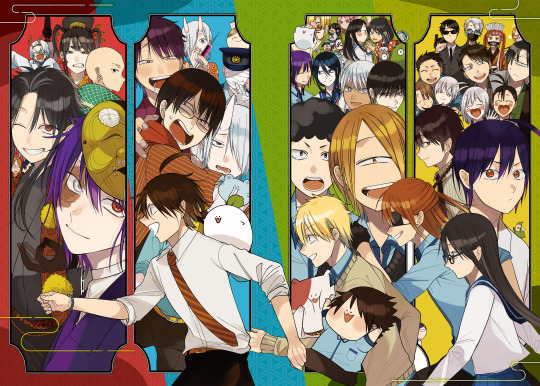
Chapter 100 translator's notes thoughts
Would be pretty bold of me to call this tl notes considering how long and rambly it got lol
First off, some news: JP volume 15 will release on June 27! It’ll likely contain ch 94 to 100 (based on pagecount). Vol 2 of yoseito also releases the same day, probably containing ch 16 to 32 (and i’ll finally be able to tl ch 16)
Also, vol 13 in english comes out July 18
Chapter Name

Honestly I could have translated it as “Hundred Demons’ Night Parade of Hyakki Academy Island” but that’s really long and doesn’t have the double “hyakki”s and also everyone knows what “hyakki yakou�� is right? Right?
Anyway, the part I’m pointing out is the way it’s numbered. In Chinese and Japanese, there’s an alternate system for numbering things in a set if there’s only 2 or 3: 上-中-下 or 前-中-完结 (or 后)
上-中-下 means literally “upper - middle - lower”, 前-中-完结 means “start - middle - end” (if there’s only 2, it skips the middle)
So the fact that this is used tells that this is a 2 or 3 part arc, instead of simply “part 1” which tells you nothing about how many parts there are total. Unfortunately, simply “part 1” is also the most natural way to number things in English so it is what it is. Also I don’t know if it’s 2 or 3 parts so it’s not like I can confidently put “part 1 of 2”.
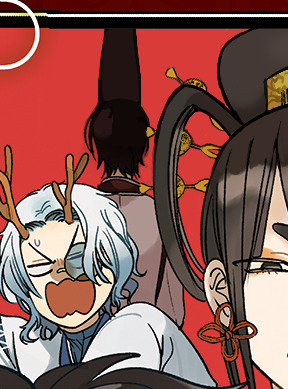
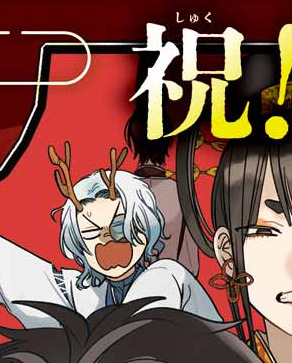
While we’re on the color spread, did you notice Seimei in the back? (With the JP he’s way more covered by the text)
At first I thought it was “gods / teachers etc / class 2-3 / family” but then I realised Principal was on the left so its actually “senior citizens / teachers etc (relative youngsters) / class 2-3 / family” (and then later noticed Seimei and karasutengu troupe behind Ranmaru)
Also Ame on the color page again!! Ame nation (population: me) being fed this year amen
Autumn Festival

The autumn festival, or aki matsuri. As the name sounds, it’s kinda vague, and from what I could find, while a lot of shrines and temples celebrate it, there’s not one nationwide date, and it happens anytime from early October to late November, most commonly around late October to early November.
(Really? Is canada really focusing on dates again? For real? Again?)
Late October/early November is probably right, given the most recent confirmed date we have (ch97, October 18th), and it’s still within 2 weeks of ch95. (And also because time travel stuff hasn’t happened yet, which also has to be within these 2 weeks where he has bandaged arms. its me, ceo of time travel truthing)
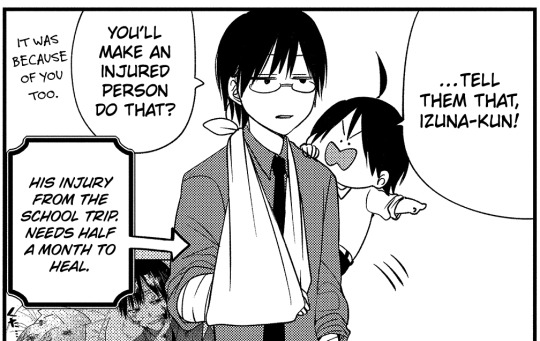
What Is Sensei Cooking


First of all, the bandaged arms, Hatanaka time travel etc etc I’ve said this a million times.
The mystery of why Ibara likes Hatanaka in the first place gets brought up again! It’s GOTTA happen it HAS TO.
That aside, this is the second time it’s brought up that the baby may be a shutendouji (the other time is ch 81) and I’m starting to think this is going to be like… real plot or something…? Eyebrow raise?
If we do the maths, ch11 (the first senseis’ sunday chapter, where we learn Ibara is pregnant) happens on May 26th (assuming my timeline is right), and it’s currently October/November, so she’s at least 5 months pregnant. It also mentions she was feeling ill, which was why Hatanaka took her to the hospital, so she may have already been a few months pregnant at that point (assuming the pregnancy is a similar length to humans’)
Well. This doesn’t really mean anything but I like putting things into perspective.
Also, I’m just realising that both senseis’ sunday chapters (11 and 81), besides being “the teachers hang out on a sunday”, are actually caused by Ibara being pregnant. What the hell why is this manga so smart (I may just be stupid)
Random misc TL notes

Late Edo period would be around 1850s/60s. For reference, Takahashi was in school 120 to 130 years ago, and the main story takes place sometime in the 2010s, so that would have been the 1890s, plus minus 10 years.
I’ve mentioned this before and it’s not really an important detail, but “temple” is for Buddhism and “shrine” is for Shinto.

“Shintai”, literally translated, means “god’s body”, is the object of worship at shrines that stands in for the god itself. It could be something small and held in the shrine like this mirror, or like the whole of Mount Fuji. The tree at the shrine Genbu recommends in ch 94 is also a shintai. I could have translated it more but if they’re going to talk about it a whole lot may as well keep it as it is.
Now “shinsen” is evidently such a rare word that sensei had to put that note there, and also my phone couldn’t type the “sen” kanji. If it weren’t for that note I totally would have just gone with “food offering” and been done with it!! (shakes fist)

The stuff on the shelf is probably what clued Principal in that Ranmaru didn’t have prizes other than candy (besides knowing what he’s like ofc). There is no way this guy owns A5 wagyu. Or onsen trip tickets. Also irrelevant but that game console says “sailor” lmao
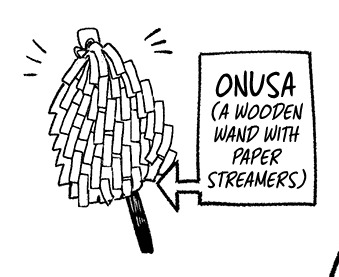
This thing… well… the screenshots speak for themselves
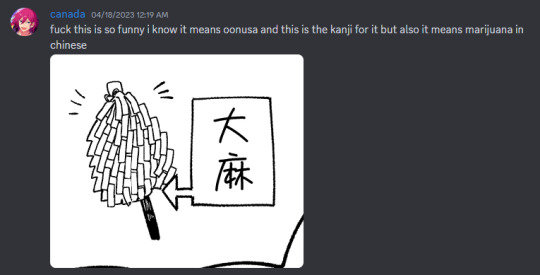

Marodo Shrine
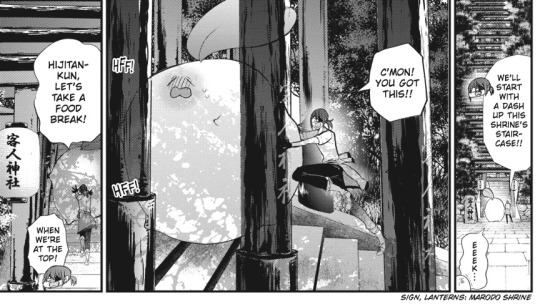
Marodo shrine has actually been shown before, in chapter 27. It wasn’t even brought up by name in any dialogue but it stuck out to me because I remember finding it weird there’s a shrine on the island and googling it to get no real answers. The name itself is pretty vague, “客人 marodo” just means guest, in this case “guest deity” (so it's not the name of any god).
But looking at it now with the knowledge of, yknow, turtle island, it’s fairly interesting.
There are a few shrines called “Marodo shrine” but the common trend seems to be an association with Itsukushima island (also known as Miyajima) or the sea. The most famous one probably being the one in Itsukushima shrine (the shrine with the giant torii on the ocean), and the island itself is said to be the god and the object of worship. There’s a pond called “Kagamiike” (mirror pond) in the shrine, and the Marodo shrine itself worships the 5 sons of Amaterasu, which tangentially connects it to the Yata no Kagami mirror of the three sacred treasures of Japan. None of this really means anything it’s probably just happenstance. For one, Itsukushima is in Hiroshima, nowhere near the location off the coast of Tokyo that the manga shows multiple times.

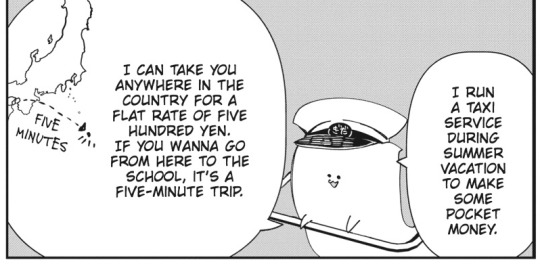
But it’s not like I’m pointing this out because it’s a 1 to 1 comparison, rather it’s an interesting coincidence (probably). By the way, I think this is where the shrine is on the island (since it’s on the mountain and has steps leading up to it)

Turtle Island

Anyway. Speaking of turtle island. Wow turtle island am I right. I still have not recovered from turtle island this page is insane. I’m pretty sure this is also the first time we get a good look at the island from above. You can see the train station they’re at in ch 58 at the bottom there.

Like how principal face reveal recontextualizes every previous time we see him, this is the same thing to me.
It specifically points out that it's from Chinese mythology, which is interesting, and I wonder if there's anything more to that than just being trivia. In Chinese mythology, the spirit turtle, or just turtles in general, are a part of a set of 4 sacred/illuminated/intelligent beasts, being: dragon, phoenix, kirin and turtle. This is distinct from the other set of 4 animals that are Seiryuu (dragon), Suzaku (bird), Byakko (tiger) and Genbu (turtle + snake). But these two share a lot of concepts because they’re the sort of animals that show up everywhere in Chinese mythology anyway.
Mount Penglai (Horai in JP) is said to be an island where immortals reside and is carried on the back of a spirit turtle in the ocean to the east of China. (This will be relevant?)
Turtle Tangent
A commenter on Bilibili (the chinese tl site) pointed out, and I’ve noticed personally, that the spirit turtle of China is typically a land tortoise or freshwater softshell turtle, and almost never depicted as a sea turtle, even in the context of “carrying an island in the ocean”.
This is very irrelevant, but I haven’t seen anyone make the connection, so my hypothesis is that “sea turtles” just weren’t a known thing in ancient China. There are 5 species of sea turtles native to the seas around China, but all known nesting locations are far in the south, whereas most of the population centers throughout history have been in the north, and most importantly, inland. On the other hand, tortoise shells have been used for writing and divination since writing developed, and softshell turtles are used in chinese medicine.
Of course, that wouldn’t be the reason in the modern day, but perhaps that specific image of the “spirit turtle” has become encoded into the mythology and become a fictional creature as much as dragons or kirin.
Honestly I’ve Just Been Chasing Tangents For This Part
Another story that comes to mind when hearing “turtle” and “mythology” is probably Urashima Taro, a fisherman who saves a turtle and is carried on its back to the dragon’s underwater palace, but when he returns to land he finds that hundreds of years have passed. In an older version of the story, instead of the dragon’s palace, he is taken to Horai (aka Mount Penglai).
There’s some kind of connection here with Itsukushima shrine I think, which is said to be built on the ocean in the image of the dragon’s palace, located on and worshipping an island mountain.
None of this means anything, probably. I just want to see what sensei cooks up really
One last thing though, about Ranmaru. We get 2 pieces of somewhat-conflicting info directly from him: “this god owes me a favor so they gave me this island” and “this island IS the god, and they’ve been asleep in a mirror this whole time”. You see how this doesn’t sound good for Ranmaru right. I don’t necessarily think he’s lying about any of it since he looks too serious for that, but he’s definitely leaving out some important details on purpose.
Thing is, if the mirror has to stay in the shrine to keep the god asleep, telling the principal to make offerings to it every 3 years a pretty good way to make sure the shrine is maintained and the mirror isn’t lost to time, as well as sidestepping the problem of curiosity if he outright said “the condition is you keep that mirror in that shrine”. Actually, did the shrine and mirror already exist on the island before Ranmaru gave it to the principal? And if it didn’t, how was Reiki being kept asleep before, and who made the mirror?
In any case. Ranmaru I love you but you are going to have to explain everything. Anyway this has been 1800 words and I need to end it so I can close the 50 wikipedia tabs I have open.
#rambles#a terrified teacher at ghoul school#youkai gakkou no sensei hajimemashita#time travel truthing yet again. when will i talk about anything else#reusing the color spread clean for this post too. it took so long
40 notes
·
View notes
Text
The Scarlet Alchemist review
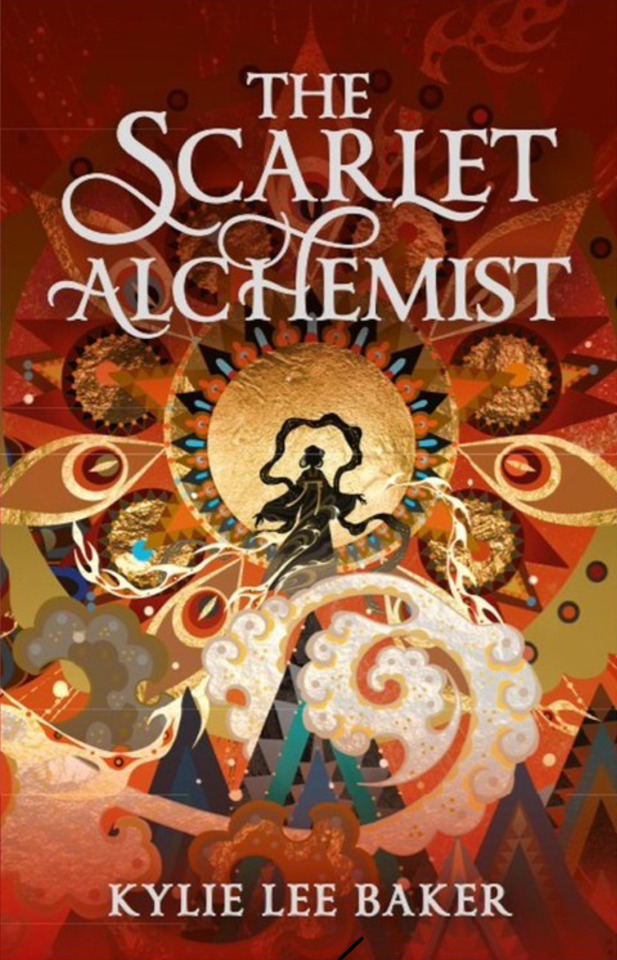
5/5 stars Recommended if you like: fantasy, alchemy magic, conspiracies, monsters
This was not a book that was on my radar but it came as part of a book box subscription and I'm so glad it did! The idea of jewels being altered alchemically to be something the rich can eat to live forever is so interesting and has such layered connotations to it.
The story opens with Zilan talking with a client about doing a resurrection. We get quite a bit of info on conducting resurrections since Zilan and her cousin's have made this their side business in order to help their family stay afloat. I liked the way the resurrections were described and thought the details of the magic were interesting. I also think seeing a resurrection first-thing helps set the stage for how magic works in this world.
Since magic is based in alchemy, it's drawn from stones and gems, each of which has a different power depending on its properties and elemental alignments. Zilan, being both a resurrectionist and someone who wants to sit for the civil exams, has to know a lot about the different stones. Once Zilan is in the imperial city, we get to see more alchemists and different uses of stones, and I really liked seeing the innovative things people came up with. I thought it was particularly clever the way Zilan would fashion rings out of gems, metals, and stones in order to have a quick source for magic. The imperial alchemists in particular are the cream of the crop and thus are both extremely talented and extremely creative in how they use their magic. I liked the camaraderie amongst the imperial alchemists and thought they brought a touch of light to an otherwise dangerous court.
Zilan is someone who wants to climb the social ladder in order to help her family. She's immensely loyal to her cousins, aunt, and uncle, who took her in after her father left and her mother died. Zilan is a talented alchemist and has figured out the secret to raising the dead after only ever being self-taught. Thanks to her success and renown she's able to enter the world of the court alchemists and have a chance to provide for her family the way they've provided for her. Yet at the same time she feels a sense of unworthiness, of being the child they had to take in due to familial duty, and that leaves her feeling as though she needs to work extra hard to prove she's worth it (of course her family doesn't actually think of her as a burden, but it's hard for her to overcome). Her insecurities about having been taken in, and having a foreign-born father do cause some internal problems for her, which at times translate to spats with her cousins. Regardless, it's clear she loves them deeply and would do anything to help them and ensure their safety.
Yufei is Zilan's cousin/adoptive sister and I absolutely loved her character. She's described as being a classically beautiful girl and their culture's 'perfect wife' material but should anyone say that to her face she'll square up and make them regret the 'compliment.' Yufei is definitely the fighter of their trio and is fiercely protective of Zilan and her brother. I also appreciated her mischievous side and seeing how she could be playful as well as the serious scholar and the fierce fighter.
Wenshu is Zilan's other cousin/adoptive brother and is the cautious one of their trio. He's soft spoken and worries over things like cleanliness and getting into trouble. That being said, I think he and Zilan have similar insecurities, though coming from opposite directions. Zilan worries she isn't loved enough because she's a burden and half-Chinese, Wenshu worries Zilan doesn't love them because she's capable of rising so high and 'leaving them behind.' This does cause some friction between the two of them, but Wenshu loves her and his sister and it's clear his worries simply get the best of him sometimes (that being said, I think he does get upset with Zilan about some things out of her control). At times he acts as a mitigating influence at times to Zilan's desires and Yufei's impulsivity, and he provides some humorous moments as well.
Li Hong is the crown prince who hears of Zilan's renown and asks her to resurrect him after his death. He's a sort of bumbly fellow who does his best but definitely grew up rich and secluded in the imperial palace. While he's faced hardships and loss, he also doesn't totally understand how other people live and the kinds of things that might offend them. But Li Hong is open to Zilan's admonishments and does his best to do better in the future. He's definitely a big softy, and I liked seeing that juxtaposed with Zilan's more hard pragmatism.
The plot was enjoyable, especially since I came into this with no spoilers and so truly got to guess where things were going to go. There were definitely some surprises and twists, and I liked seeing Zilan and her allies/friends work together to overcome the threats looming in the imperial palace. There were also some really interesting things going on plot-wise with immortality, resurrection, and the monsters.
Overall I enjoyed this book and am greatly looking forward to the sequel. All the main characters were likeable and still distinct from one another, and I look forward to reading more about them in book 2!
#book review#book#books#book recommendations#fantasy#bookstagram#bookblr#booklr#bookaholic#bookish#book addict#ya books#ya fantasy books#ya fantasy#fantasy novel#alchemy#asian authors#historical fantasy#the scarlet alchemist
5 notes
·
View notes
Text
The Virtue of Void

The dragon mark on the Shepherd’s glove is modeled after Maotelus, and even the cloak is based upon the patterns of Maotelus. The Shepherd also uses Maotelus’ powers, the “Silver Flame”, to purify hellions. Yet, I think, even outside of his duty as the Shepherd, Sorey’s character represents the virtue in the element that Maotelus represents, Void.

In Zestiria, there are five elements: Earth (地), Water (水), Fire (火), Wind (風), and Void (無), modeled after the Godai (五大) in Japanese Buddhism: Earth (地), Water (水), Fire (火), Wind (風), and Void (空); as you can see that even the Five Lords are called Godaishin (五大神) in Japanese. However, if you notice in the kanji used for void, it’s actually different; sure, both “空” and “無” can be translated to “Void” in English, however, there’s a big yet nuanced difference here.
When 空 is used (like in the original Godai in Buddhism), Void means something like a vacant space. There’s nothing inside. Think about how a vase is useful because it has the clay part holding everything together, and the space inside it that you can put anything in it. In Buddhism, this character is used when describing śūnyatā or the element of ākāśa (both are very different concepts, mind you).
When 無 is used (like in Zestiria), Void means something like no-thing, like when you put the prefix un- or non- in English. It is the “without”. What it is not, however, is “no” in the “yes” and “no” dichotomy, which I will talk about later. It also, in some ways, refers to pure awareness, before the human gains experience and knowledge.
In Zen Buddhism, there’s a popular kouan in Mumonkan (無門關, lit. The Gateless Gate), in which the first kouan (趙州狗子) reads like this:
趙州和尚、因僧問、狗子還有佛性也無。州云、無。
A monk asked Zhaozhou Congshen, a Chinese Zen master, “Has a dog Buddha-nature or not?” Zhaozhou answered, “無.”
This has been interpreted to mean as follows: The kouan is not about whether a dog does or does not have a Buddha-nature because everything is Buddha-nature, and either a positive or negative answer is absurd because there is no particular thing called Buddha-nature. In it, the answer of “negative”, 無, is clarified as although all beings have potential Buddha-nature, beings who do not have the capacity to see it and develop it essentially do not have it. The purpose of this primary kouan to a student is to free the mind from analytic thinking and into intuitive knowing. A student who understands the nature of his question would understand the importance of awareness of potential to begin developing it.


VELVET: Let me ask you a question, Shepherd. Which do you choose: the “many” or the “individual”? SOREY: Well, I suppose I'd choose each of the “individual” so I'd end up with the “many.”
This is a very Sorey-like answer, of course, in which I mean to say that here he basically refuses to engage in the dichotomy presented by Velvet (Artorius, actually). Sorey indirectly says to unask this question; it is fundamentally flawed and that he won’t give in to the premise that a dualistic answer can be given in this case. It’s not either-or, because without the individual, there is not the many, and vice-versa.
To explain more on that, I’d like to go back to the Five Lords, but especially look at the crests for the two known leaders of the Lords: Maotelus and Innominat.

The Crest of Maotelus
A crest signifying Maotelus, the central figure of the Five Lords—a lord of the void, who embodies both light and darkness.

The Crest of Innominat
A crest that bears a distinct resemblance to that of Maotelus of the Five Lords. The dark parts are absent, leaving one with an impression of light and purity.
These crests are deliberately similar, yet the big difference is that Innominat’s is missing the “dark” parts: signifying only “light” and “purity.” The “void” that Maotelus represents, on the other hands, embraces both the “dark” and the “light”, and we have the entire game of Berseria to explain why that is.

Taking a closer look at Maotelus’ crest, it reminds me of another symbol that exists in the real world, because of the equal and interacting dark and light parts, almost cyclical.

Taijitu (太極圖), literally meaning the Symbol of the Supreme Ultimate, is often used to symbolize yin-yang (陰陽), opposing yet non-adversarial forces that complement each other, equally taking turns on waning, waxing, waning, and waxing again. The common saying in English is that “there are two sides to everything”, however this doesn’t fully explain the symbol: one half of the yin-yang cannot exist without the other. They are inseparable. If you have a hill that has a sun shining on one side, then you have one sunny side and one shady side. You cannot have an inside of a square without the outside, or the outside without the inside. That sort of thing.
「オレはヘルダルフがどうして災禍の顕主になったのかを知りたいんだ」
迷うことなく答えたスレイにメーヴィンは重ねて尋ねた。
���知ってどうする?あいつを倒す弱点を見つけたいのか?」
「それは……考えたことなかったな」
「なに?」
意外な答えにメーヴィンは眉間に皺を寄せた。
「じゃあ、なんのためにヘルダルフの過去を知りたいんだ?」
「導師として……ううん、オレがオレとしてヘルダルフと向き合うためだよ」
導師の使命は禍の顕主を鎮めること。スレイが導師になった当初、ライラはそう説明した。そのためには、世界を識る必要があると。
そしてスレイは旅に出た。出会いと別れを繰り返し、喜びと悲しみを繰り返した。どんなことにも裏と表があり、それらは切り離せない関係にあることを識った。
「旅は、導師として必要だったのかもしれない。でも、オレは導師であるまえにオレなんだ。世界を旅して、この世界が災禍の顕主によって危機に瀕していることを改めて識った。それを止めたいと思うのは、導師だからじゃない。オレ自身なんだ」
災禍の顕主は世界を穢れで満たそうとする、いわば大きな”負の流れ”だ。それと向き合い、抗おうとするなら—”正の流れ”になろうとするなら、相手を深く知り、正しく裏と表の関係にならなくてはいけない、とスレイは感じていた。
「導師として災禍の顕主と戦うだけなら、過去なんて識らなくてもいいかもしれない。でも、オレは識りたいんだ。自分が向き合うためには、それが必要だって感じてる。導師じゃなく、オレの勝手な願いだけれど、迷いのない選択をしたいから……メーヴィン、力を貸してくれないかな?」
メーヴィンは沈黙した。顔から笑みは消え、鋭い眼光がスレイを見定めるように行き来する。///スレイも沈黙し、メーヴィンの答えを待った。
やがて語り部は深くため息をついた。
「……なるほどな。使命じゃなく、己の意志で戦うことにしたってわけか……。確かにたいしたタマだったようだ」
“I want to know why Heldalf became the Lord of Calamity.”
Sorey answered without any hesitation, and Mayvin asked again.
“And what will you do once you know? Do you want to find a weakness to take him down?”
“I... had never thought about that.”
“What?”
Mayvin’s brows wrinkled at the unexpected answer.
“Then, for what reason do you want to know about Heldalf’s past?”
“I want to face him as the Shepherd... no, as myself.”
It is the Shepherd’s duty to quell the Lord of Calamity. When Sorey first became the Shepherd, Lailah explained this to him. In order to do so, he needed to know the world, she also told him.
Then Sorey set out on his journey. He had repeated encounters and farewells, experienced repeated joy and sorrow. He learned that everything had two sides to it, and that these two sides were inseparable.
“This journey might have been necessary for me as the Shepherd. But I am me before I am the Shepherd. Traveling around the world, I understood once again that this world is threatened by the Lord of Calamity. And I want to stop that not because I am the Shepherd, but because I want to do it as myself.”
The Lord of Calamity was a great “negative flow,” so to speak, that seeked to fill the world with malevolence. To face and resist this, to be the “positive flow,” Sorey felt he had to know the other party deeply and be on the right side of the relationship between the two.
“If all I want to do is to fight against the Lord of Calamity as the Shepherd, I may not need to know anything about his past. But I want to know; I feel that I need to in order to face him. It’s my own selfish wish, not as the Shepherd, but I want to make this choice without hesitation, so... Mayvin, will you lend me your strength?”
Mayvin was silent. His smile faded from his face, and his sharp eyes came and went as if he were assessing Sorey.
Sorey, too, was silent, waiting for Mayvin’s answer.
“...I see. So you decided to fight him not because of the Shepherd’s calling, but on your own will... you certainly have the gall to do it.”
Emphasis mine. Like coins, Sorey realizes that everything can’t have the tails (裏) without the heads (表). If Heldalf is the minus (負) of this world, so to speak, then in some ways he intuits that he needs to be the plus (正). That’s just how the world operates—it will yield to the balance, as he gets it.
(By the way, this whole duality of everything also applies to life and death in Daoism, and Zestiria, as a whole, touches upon both life and death in its narrative.)
死生,命也,其有夜旦之常
Death and life are ordained, just as we have the constant succession of night and day.
故善吾生者,乃所以善吾死也
That I found it good to live is the very reason why I find it good to die.
(For a person to value life but resist death would be a perversion of our very nature, as life and death are natural stages of being, if we value a person’s life, we should likewise value their death.)
反者道之動 弱者道之用 天下萬物生於有 有生於無
Returning is the movement of Dao. Yielding is the manner of Dao. The ten thousand creatures of the world are created from being; Being is created from non-being.
—Dao De Jing (道德經) verse 40
道生一 一生二 二生三 三生萬物 萬物負陰而抱陽 沖氣以為和
Dao creates one. One creates two. Two creates three. Three creates the ten thousand creatures. The ten thousand creatures carry Yin and embrace Yang, Pouring their Qi together, thus becoming harmonious.
—Dao De Jing (道德經) verse 42
In Daoist philosophy, the yin-yang becomes sensible from an initial, quiescent nothingness or non-being (無), and continues moving on until that quiescence is achieved again.
And I’d like to emphasize this: at the center of Daoist philosophy is that nothingness (無). Everything emerges from that 無, and will come back to that 無 as well; that’s how the world will settle itself naturally, and that’s how we live with Dao (道), or, put simply, the underlying principles of the universe (this is a very gross simplification, by the way).
One of the important concepts in Daoism is wu wei (無為).
道常無為 而無不為
Dao ever-constantly practices actionless action, Yet nothing is left undone.
—Dao De Jing (道德經) verse 37
The term basically gets translated as a lot of things (actionless action, non-action, etc.), but wu wei refers to an action that you do without needing to act on it; an action that is so natural to you that you don’t have to consciously think about how, what, why, when to do it. (Think of how when you learn how to drive, you are conscious about many things, yet when you’re already adept, it’s almost second nature to you.)
Without forcing it. Yes, perhaps that is the right word.
將欲取天下而為之 吾見其不得已
[夫]天下神器 不可為也 為者敗之 執者失之
故物 或行或隨 或(歔)或吹 或強或羸 或挫或隳
是以聖人 去甚 去奢 去泰
Would you take hold of the world and control it? I see you have no choice.
Now: the world is a divine vessel, You can not control it (indeed!). He who acts, ruins it; He who grasps, loses it.
So, among all things, Some lead and some follow, Some sigh and some pant, Some are strong and some are weak, Some overcome and some succumb.
Therefore the sage avoids extremity, excess, and extravagance.
—Dao De Jing (道德經) verse 29
There is an order to life, and we play our parts in it. That’s fine, and it grants us enough liberty to explore our capacities and take delight in them. But if we try to overstep our boundaries, extend beyond our capacities, we will fail miserably and painfully.
There is no satisfaction in pretense, if allowed to guide our lives. We need to be what we are, not what we would like to be.


ROSE: Sorey. If a heart set on justice starts generating malevolence, how do you think it should be stopped? ROSE: That’s what her angle is. She thinks her own personal justice and a universal sense of justice are one and the same.
I hope it’s obvious enough why Cardinal Forton is different from Sorey, despite both having strong enough desires/dreams of their own.
(There’s also duality at play here—Sorey gives life, Rose takes life.)
「イズチにいた頃は"穢れは危険なもの"って認識ですんだけど、こうやって人の世界に出てくると、そんな単純なものじゃないんだってわかったよ。人の社会と穢れは切っても切れない関係なんだ。そこで生きていくということは、誰でも穢れを生む可能性があるってこと」
スレイは街を見通した。フォートンの影響がなくなったとはいえ、穢れはまだ残っている。街の人々が知らないうちに生んでいるのだ。
「オレも穢れを生むかもしれない」
「君は穢れを生まないよ」
ミクリオは間髪入れずに答えた。スレイは顔をしかめる。
「.......どうして、言い切れるんだ? どうしても叶えたい夢がある——その点では、オレとフォートン枢機卿の気持ちは一緒じゃないか。それで、あの人は穢れを生み出していた」
「あの人とスレイは違う。君はひとりじゃない」
ミクリオははっきりと言った。
「夢を叶えるには、揺るがない意志が必要だ。けれどその強さゆえに、視野が狭くなり、他者の痛みに心が麻痺していく。——でもそれは一人だからだ。一人で夢を叶えようとするから、周りが見えなくなる」
ミクリオはスレイの両肩を摑み、言い聞かせるように言った。
「君の夢は、僕の夢でもある。君が暴走しそうになったら、僕が殴ってでも目を覚まさせる。僕を信じられないか?」
スレイは迷わず首を振る。その勢いのよさに、ミクリオは少しだけ笑う。
「だから君は穢れに捕まることはない、絶対」
“When I was in Elysia, I was aware that malevolence was a dangerous thing, but now that I’m out in the world of humans, I come to realize that it’s not that simple. Human society and malevolence are inseparable, even if we try to separate them. Living in such a world means that everyone has the potential to be tainted.”
Sorey looked over the town. Although Forton’s influence is gone, malevolence still remains. The people of this town were giving birth to malevolence without them realizing it.
“I might give birth to malevolence too.”
“You won’t.”
Without a moment’s delay, Mikleo answered. Sorey frowned.
“…How can you be so sure about that? I have a dream that I really want to fulfill——and in that respect, aren’t my feelings the same as Cardinal Forton’s? She was giving birth to malevolence because of that.”
“You’re different from her. You’re not alone.”
Mikleo made it very clear.
“An unwavering will is needed to make dreams come true. But because of how strong it is, our vision narrows and our hearts become numb to the pain of others——but that’s only because we are alone. Because we try to fulfill our dreams alone, we lose sight of the world around us.”
Mikleo said, grabbing both of Sorey’s shoulders, as if to remind him.
“Your dream is also my dream. If you are about to go out of control, I’ll punch you to wake you up. Or you can’t trust me?”
(Emphasis, again, mine.)
The Daoist sage is the paradigm of proper responsiveness. He has perfect sensitivity and responsiveness both to things in the world and to other people; to his surroundings. He’s open to the dynamic of relationship self-other, to the relativity and mutual involvement of self and other. In contrast with an average human being, the sage, whose heart-mind (心) is free from any residue, displays an “unbiased receptivity to things.” His empty heart-mind “takes no distortive action” and so “what is can be as it is, with no disfigurement.” Thus, it is possible for the sage to “appreciate things as they really are” and also to perceive and embrace a person as they are. The uncluttered heart-mind makes the sage well-equipped for correctly evaluating the actions of others and responding appropriately.
(I would like to mention that Zestiria tackled a bit of this whole “you’re not alone” bit earlier with a Daoist parable: the snake, the frog, and the centipede.)
Yes, it is in the heart-mind (心) that is empty; that has nothing in it. Think of it like a mirror, or a glass, that gets obscured when it is tainted, and so you can’t see clearly what’s on or through it. In Zestiria, I think this is the virtue of purity really stands for.
穢れ――自らの思うまま生きることを阻む世界の皮肉に圧し潰された、人の心の悲鳴。 その悲鳴を感じ寄り添い、本当の形の心とともに再出発する背中を押すのがスレイの救いの力(感じる力・霊応力)。 浄化の炎を振るうだけでは救いとは言えず、逆に炎がなくとも人や天族を穢れから救う事はできる。
Malevolence――The screams of the human heart-mind that is crushed by the irony of the world that prevents them from living as they wish.
To feel those screams of the heart-mind and get close to it, and push them to start over with the heart-mind in its true form is Sorey’s powers of salvation (his power to feel and his resonance).
Wielding Flame of Purification alone is not enough to save; on the contrary, it is possible to save humans and seraphim from malevolence even without it.
In Daoism, at the core of the heart-mind (心) of every human being there is an authentic self. The authentic self is intimately connected with virtue (德), which is a gift people receive at birth. But the heart-mind is also the seat of all mental activities; it is the “location of consciousness.” With time and via the contact with the outside world (learning a language, learning social norms, going through traumatic experiences, etc.), the heart-mind becomes filled—like a container—with “knowing consciousness” (知). Not knowing how to use this knowing consciousness selectively—turn it on when necessary, but also turn it off at other times—a human being comes to depend on this consciousness and identify with it completely. When unstopped in its growth, this consciousness continues to produce multiple, derivative intellectual layers atop the true self. All actions that are motivated by these inauthentic layers oppress and harm one's spiritual core.
The thoughts, actions, and speech of a person are no longer the reflection of their true self.


EDNA: Don’t let her see you frowning like that. You don’t want Rose’s feelings to go to waste, do you? SOREY: I don’t. But I just... I feel so bummed.
Now, the question of emotions. Having an empty heart-mind which is free from emotions implies being emotionless. However, it is not really the case that a Daoist sage is emotionless; rather that he does not add anything (i.e., a word, a thought, an action) to make a given emotion amplify and, thus, exceed its natural boundaries. Being free of these excessive emotion means not allowing likes or dislikes to damage you internally, instead making it your constant practice to follow along with the way each thing is of itself, without trying to add anything to the process of life.
The sage consciously restrains himself from making any such additions that would lead to prolonging the life span of an emotion. As a result, emotions remain spontaneous, genuine, and harmless—they come and go freely, like changes in the weather or the seasons of the year, and they never transform into anything excessive or harmful. Thus, emotions are never artificially solidified into a fixed identity. The sage is free from emotions in the sense that they leave no residue in his heart-mind, they do not take up the space within, and thus they do not block the sage's unity with Dao. By cultivating the void (無) of the heart-mind, the sage ensures that he is never harmed by emotions.



SOREY: You mean to live is to obey the laws of nature? HELDALF: What else would it be? SOREY: You’re wrong! All that is, is not being dead.
Daoism is a philosophy that stresses living simply and honestly while in harmony with nature. Letting things follow their natural course. Wu wei (無為), no wasted action, is the principle.
However, one thing that many people get wrong when hearing about this concept is that it means total surrender. Yes, wu wei implies giving up on forcing things. But never giving up altogether.
For instance, when you’re experiencing injustices, wu wei doesn’t suggest resignation. It’s quite the opposite. Wu wei suggests a persistent amount of pressure. This pressure isn’t a metaphorical jackhammer or wrecking ball. It’s a soft strike in the right spot. It’s like water quietly working through the toughest cliffs and rocks.
Be like water making its way through cracks. Do not be assertive, but adjust to the object, and you shall find a way around or through it. If nothing within you stays rigid, outward things will disclose themselves… Now, water can flow or it can crash. Be water, my friend.
Passivity is often looked down upon. In the case of Zestiria and Sorey, (especially in the early reviews where people started playing Zestiria in bad faith because of the infamy surrounding the game), people often criticize how Sorey is not the ideal male Tales protagonist; he is often called “radio-controlled” (ラジコン) in the sense that Rose (along with the others, especially Lailah) is seen as the one controlling and driving his character around, thus, Rose is, to the eyes of these people, the “real” protagonist of Zestiria because she is the more “assertive” one. And she is assertive, by the way, but I think people look at Sorey’s character the wrong way.
Yielding and passivity are virtues traditionally associated with the feminine in the Daoist point of view, and I know this might have caused some knee-jerk reaction in some people, but in Dao De Jing, even though the intended audience would've been men, students are encourage to embrace and nurture the feminine elements of their nature. These feminine virtues are seen as positive traits to have, not inferior to their more assertive masculine counterpart.
The “feminine” is the earth. The inborn nature of its body is stable. Women are patterned on it. If a man wishes to congeal his essence, he should mentally pattern himself on earth and be like a woman.
And it is, intended as part of his character.
山本 そういう意味ではおとなしい主人公に見えるかもしれませんが、熱い思いはちゃんと持っていて、叫んだりノリや勢いだけで解決しようとはしないキャラクターにしたんです。代わりに、ミクリオをストレートに感情表現するキャラクターにして、2人で1人の主人公のような言動をとるように工夫しました。
YAMAMOTO: In that sense, [Sorey] may seem like a calm protagonist, but he has passionate feelings, yet does not try to solve problems by shouting or just going with his spirit or momentum. Instead, we made Mikleo a character who expresses his emotions in a straightforward manner, so that the two of them act and speak as if they are one protagonist.
馬場 彼が世界を動かそうとしたんじゃなくて、彼の行動の結果が世界を動かしていく、変えていく。
BABA: He didn’t try to move the world, but the results of his actions moved and changed the world.
Sorey is like a blank canvas, unstained, yet with a strong, pure core. With this heart-mind of his that is empty in the Daoist sense, he acts just as he does, just as he is, staying true to himself. He never forces his way through, he knows that he has to be in harmony with nature (as symbolized by the seraphim, who are described as the very world the humans live in itself), and he then learns that everything in the nature has two sides to it—this includes reconciling not just life but also death. To respect life, you have to respect death. To respect death, you have to respect life. But to yield also means to still be alive; being alive is not the same as not being dead, after all. He has learned to be in check with himself, and with his surroundings.
Sorey is really the perfect character that embodies the values that Maotelus’ Void represents. Empty of malevolence.

One thousand years apart, and he manages to inherit that will. Legends (伝承) are not just told (伝), but also needs at least someone willing to listen to them (承); it’s why they’re called that way.
“Legends” will someday become “hope.”
#tales of#tales of zestiria#mino talks zesty#mino rambles#very long post...#i always get too long-winded yet say nothing lol
17 notes
·
View notes
Text
Animation Night 149: Toei
Hi there. It’s Thursday. You know what that means (yes, it means i’m freeeeee)
Today we will be rolling back to some of the earliest days of anime!
The story of Toei goes back to 1946. In the immediate aftermath of WWII, there were very few games in town when it came to Japanese animation (or, to be fair, animation in most places). During the war, animators had been recruited to make propaganda films such as Momotaro: Sacred Sailors, among them Akira Daikuhara.
In the immediate aftermath, Kenzō Masoaka (of Benkei tai Ushiwaka, for anyone who remembers AN24) began the first effort to make an animated film post-war. This film was titled Sakura: Haru no genso (Cherry Blossom: Spring’s Fantasy); it was followed by a series of three films about a cat called Tora-Chan. But Masoaka’s studio struggled, constantly closing and re-opening. At the time it was operating under the name 日本動画映画 Nihon Dōga Eiga or Japan Animated Films, or just the abbreviation 日動映画 Nichidō Eiga. In 1956, they were bought by live action studio Toei (itself approaching 20 years old, founded in 1938) and renamed to Toei Dōga, where they started making increasingly elaborate animated films.
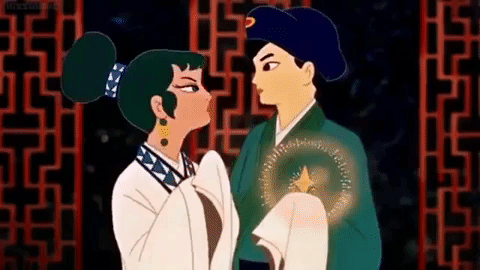
Toei of this era was sometimes called the rather patronising name ‘Disney of the East’. There is some truth to it, in that their ambition, especially in the early years, was certainly to make animated films as elaborate as those of old Walt. Their first feature was 白蛇伝 Hakujaden (1958), based on a Song Dynasty Chinese legend about a lost pet snake who transforms into a woman in the hopes of reuniting with her former owner, a monk who thinks that’s sus, and two pandas who try to sort it all out; in English it’s variously translated as The White Snake Enchantress, Legend of the White Serpent or even Panda and the Magic Serpent.
Part of the goal of the film, to Toei Dōga president Hiroshi Ōkawa, was a gesture of reconciliation towards China after the whole ‘invading and occupying’ thing.
The film was Rintarō’s first animation job; it also left a massive impression on a young Hayao Miyazaki, who wrote the following in Gekkan ehon bessatsu: Animēshon (1979), trans. Beth Cary and Frederik L Schodt in Starting Point:
What I’m saying here is that when young people feel attracted to the heroes of a tragedy [context: such as The Diary of Anne Frank], whether in animation or other media, a type of narcissism is really involved; this attraction they feel is a surrogate emotion for something they have lost.
From personal experience, I can say that I first fell in love with animation when I saw Hakujaden, the animated feature produced by Toei Animation in 1958. I can still remember the pangs of emotion I felt at the sight of the incredibly beautiful, young female character Bai-Niang, and how I went to see the film over and over as a result. It was like being in love, and Bai-Niang became a surrogate girlfriend for me at a time when I had none.
It is in this sense that I think we can achieve a type of satisfaction, by substituting something for the unfulfilled portion of our lives.
The feelings evoked by Bai-Niang may go some way to explaining the role of similar girls in Miyazaki’s movies...
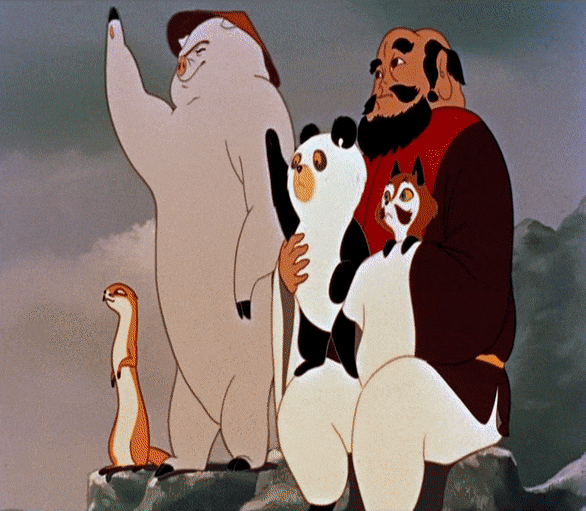
Hakujaden has some curious properties as a work of animation. It was, especially for the time, astonishingly elaborate and straining the technical capabilities of the industry (although the claim on Wikipedia that it had 13,590 staff seems rather dubious lmao). The drawing count is stratospheric thanks most scenes being animated on ones and twos - the opposite of the limited animation techniques that anime would later perfect. Despite that, it is also the work of an inexperienced team, and compared to later works its animation can feel awkwardly timed, the flood of inbetweens turning everything to mush.
Nevertheless, there are two stars of the show in terms of animation. One is Yasuji Mori, who would later be one of Toei’s star animators, creating scenes such as the dance at the beginning of this post - as well as teaching Miyazaki after he joined Toei. The other is Akira Daikuhara, who was way ahead of the game on effects animation, creating the film’s transformation sequences. Daikuhara would go on to be one of Toei’s main animators of human characters, while Mori tended to take the animal/mascots; he has been a relatively forgotten figure, although that’s starting to change with articles like these ones by Matteo Watzky, whose research just digs deeper and deeper.
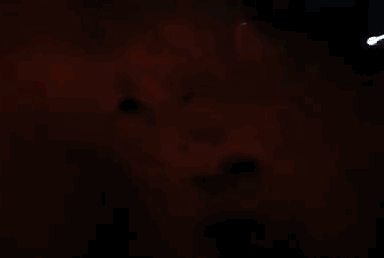
Toei’s early films tend to follow the precedent set in Hakujaden, adapting folktales from (mostly) China and Japan. In 1959 they covered a Japanese story in Shōnen Sarutobi Sasuke; 1960, they took on Saiyūki (Journey to the West); then Anju to Zushiōmaru (The Orphan Brother, 1961) and Arabian Nights: The Adventures of Sinbad (1962).
In this period of Toei, there was a lot of ambition, and also a feeling of inadequacy compared to the elaborate animated films being made in other countries. Hayao Miyazaki, who joined Toei in the 1963, wrote in 1982:
I used to create feature-length works for Toei Animation, but compared to the works just mentioned, they were obviously far inferior, at least technically. Sort of like showing rabbits slipping and falling, that sort of thing. We wondered if we would ever catch up to the level of what was being done in America, France or Russia, or if it were even possible to do so. Frankly, we really didn’t know.
To begin with, we didn’t even know what we had to do to reach the same level of excellent as the best works out there. We knew we had constraints, such as short production schedules, small budgets and so forth, but above and beyond that, we began to develop an inferiority complex: we wondered if we even had the basic talent needed to proceed. In retrospect, the only thing that probably kept us going, and drove us to pursue such a long-term goal, was our determination.
Miyazaki’s words should be taken with a grain of salt, since they definitely suit his personal myth-making. Still, conditions at Toei in the 60s were rough, leading to the first major unionisation struggle of anime history, which I wrote about in AN70. The studio started bringing on part-timers paid hourly rather than a salary, and created severe pay discrepancies, which were met with strikes and departures from the studio. Saiyūki took such a tole on its director Taiji Yabushita that he was hospitalised; Yasuji Mori would later create the term ‘anime syndrome’ for this sort of overwork because it was not the last time by any means.
However, I’m going to zoom over all of these to get to the わんぱく王子の大蛇退治 Wanpaku Ōji no Orochi Taiji (The Naughty Prince’s Orōchi Slaying, more commonly translated The Little Prince and the Eight-Headed Dragon) in 1963 - not because it’s necessarily more important, although it’s remembered as one Toei’s best films, but because I happen to have a fantastic analysis of one of its key scenes on hand thanks to AniObsesive and Toadette.
youtube
Wanpaku Ōji breaks from precedent in many ways, particularly its visual design, which takes on highly simplified shapes reminiscent of the then ultra-modern UPA style by way of haniwa figures. The story at least follows the pattern, adapting a Shinto myth in which the storm god Susanoo battles (guess what) an eight-headed dragon Yamat no Orochi. Susanoo is motivated by the death of his mother Izanami, and goes on a journey to try to find her, which leads him to the village of Princess Kushinada - a village with a dragon problem, which they’ve kept at bay only by sacrificing Kushinada’s seven sisters. Susanoo, horny for a princess who looks like his mum, decides it’s time to intervene.
The dance scene above comes in the middle of the movie, in which the goddess Ame-no-Uzume performs an increasingly mystical dance. It was an ambitious experiment of Makoto Nagasawa, who had joined as an inbetweener on Saiyūki, with large spacing and broad motion to create a snappy feeling. Animation Obsessive writes:
Typical motion at Toei, Nagasawa said, would be “neatly in-betweened from the first [key] pose to the last [key] pose.” In other words, in-betweens smoothed out the movement and made it longer, more complete and more realistic. By contrast, Nagasawa’s drawings of Uzume are often at wide intervals, with minimal in-betweens. Sometimes, she basically teleports from one frame to the next.
Even when the intervals aren’t that wide, the way Uzume moves remains big, broad, clear and non-real. Nagasawa pushes her gestures, increases her speed, shows us only what he wants to show us. The action is crisp, always holding its abstract shape. No naturalistic touches distract from the core form of what Uzume does.
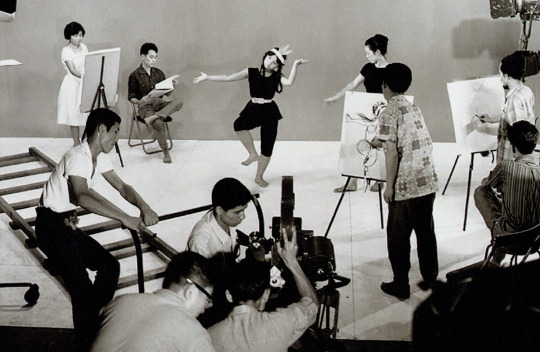
Alongside Nagasawa, Yasuji Mori was now coming into a role close to that of the now-standard 作画監督 sakuga kantoku aka sakkan or animation director, an experienced artist whose job is to correct the drawings from many different key animators to keep them on-model. Modern anime productions tend to have a strictly hierarchical approach where the characters are designed by one or a few character designers, usually also the lead sakkan. At Toei, things had been a bit more fluid - the individual animators would often design the characters they were going to animate, with a division of labour closer to the old Disney style. On this film, it became more of a hybrid: Mori drew the final model sheets, but the animators would submit suggested designs to him.
For the most elaborate scenes, such as the dance, they went to great lengths to record a suitable score and record live-action footage with professional ballet dancers. I encourage you to read the AniObsessive article for the details.
At the time of Wanpaku Ōji, Toei was starting to face competition. The already-renowned mangaka Osamu Tezuka had founded MushiPro, which was rapidly taking over TV, and the sphere of TMS satellite studios were starting to get going and siphon away many of their best people such as Yasuo Ōtsuka. Still, the animators at Toei were determined to try and stand alongside international animators:
The team was well aware of the trends in world animation at that time. According to Nagasawa, they were watching work from Canada (Norman McLaren), Czechoslovakia (Jiří Trnka), Russia (The Snow Queen), France (The King and the Mockingbird) and so on. It was all bold, new animation. In The Little Prince, Toei took up the challenge this work presented, without simply copying it. The team contributed to modern animation while staying rooted in the ancient, and in Japan itself.
Subsequently, Japanese animation is sometimes divided into a ‘Toei tradition’ vs. a ‘MushiPro tradition’, of full vs limited animation respectively, followed by the various successors such as Ghibli on the one hand and Madhouse on the other. As ever this is not really very accurate, and both ‘lineages’ crossed over extensively (just look at Kanada).
Toei’s own output adapted to the times. Takahata’s Horus: Prince of the Sun (AN 70) might be the last of the ambitious movies in their old style; after this, the fairytale films were gradually replaced by gekiga animation such as Tiger Mask, super robots like Mazinger Z, and then at the end of the 70s increasingly science fiction adaptations of Leiji Matsumoto’s works (AN 146). In the 80s, shōnen exploded onto the scene and Toei made a lot of Dragon Ball and Saint Seiya, later joined by other franchises like PreCure, Digimon and One Piece. So Toei remains one of the largest and most robust animation studios in Japan. They’ve got a lot of salaried staff, a union(!), and regular work in the form of wildly popular franchises. But occasionally they’ll make something cool and weird within that remit, like Hosoda’s One Piece film (AN61), Kyōsōgiga (AN98) - or Interstella 5555 which we watched last week.
So! Tonight though we’re going to go back and look at those ambitious early days, where it started, with snakes and dragons and a bishōjo who’s 美 enough to inspire the entire career of Hayao Miyazaki. Animation Night 149 will begin at 20:00 UK time (UTC), (13:00 California time), at twitch.tv/canmom - hope to see you there!
And next week I have a serious treat for you, because the Inu-Oh BD finally dropped. Can’t think of something more perfect for #150 than returning to Masaaki Yuasa.
And now to spend the rest of the day until 8pm on intensive gamdev 😵💫
8 notes
·
View notes
Text
Μουσική των Ουράνιων Σφαιρών — μέρος 1 — από το σούρουπο ως την αυγή

Friends, some of you know, and for some this will be news, but such a phenomenon as “Music of the Spheres” or “Music of the Celestial Spheres” came to us from ancient Greece (as well as many other things). Cosmos is a Greek word, and it means — neither more nor less — "Order". Music and Harmony are also Greek concepts. The desire of Greek philosophers to understand the structure of the World in which we live combined Music and the order of movement of the heavenly bodies in such a way that each planet or star had its own specific tonality or note, and the sound of these notes created Harmony. These were absolutely no joke researches — relying on them, the smartest people of that era found for themselves and other people the meaning of our lives (what do we live for?) and the rules, following which you can live your life happily, without suffering, because the laws of harmony are the same in Heaven and on Earth. It’s just that for now there is less Harmony on Earth, and more disharmony — disorderly, incoherent, out of step with the sound of each of us. But the Music of the Spheres can change this — at least, Pythagoras, Plato, Aristotle and many other thinkers of ancient Greece thought so. Just as a tuner compares the sound of a string and the tuning fork by which he tunes it, so people had to compare their deeds and actions with how harmonious they are with what the Cosmos sounds around us.
More than two thousand years have passed since then, but these ideas are still relevant. And a person finds happiness only when he is in harmonious resonance with the World around him. Well, if for some reason this resonance is suddenly upset, the Music of the Spheres still helps to return it.
When I recorded my first music album (in 1997) I didn't know any of this. But I intuitively searched for harmony and resonance of sound with the vibrations of the World, with the barely audible singing of the stars. When the record was ready, I finally thought about what to call it. At some point, a hint seemed to flash in my mind — “Call it “Music of the Celestial Spheres”.” And I gave it exactly that name, although at the time I had no real idea what I was dealing with.
Over the years, I then found amazing examples of other musicians and scientists going through a similar path. Johannes Kepler devoted many years of his life to attempts to create the “Music of the Spheres” based on mathematics and celestial mechanics. But in my search there was more of a desire not to calculate cosmic melodies, but to feel them with my heart, if such a thing is at all possible. It seems to me that I managed to feel something. In any case, many of my listeners who left reviews for that very first album uploaded to Youtube think the same.
Most of the time, this album was published in Russian and English versions. A couple of years ago I published an album with translations into Spanish and Chinese. And only recently I remembered that the idea of “Music of the Spheres” is of Greek origin, and that I simply must publish the Greek version of the album “Music of the Celestial Spheres”. My colleague, artist and singer Nataliya Victoria, who has lived in Athens for many years, helped me with this. And now the first album of the “Music of the Celestial Spheres” cycle has been uploaded to Youtube in Greek design — with Greek melodic names and descriptions in this beautiful language.
We also translated the design of the booklet for the CD and created a colorful digital ArtBook — all this is included with the digital version of the album. Those interested can receive it.
I hope this work will continue, and the next parts of the “Music of the Celestial Spheres” series will also be republished in the language of Pythagoras, Plato and Aristotle.
https://www.youtube.com/watch?v=aZSKna7FUFM
Happy listening, Friends!
youtube
0 notes
Text

Honestly, I don’t know Chinese, so I pretty much watched it completely blind with no context.
I really just want to know what was going on. Like did a blue gorilla get abandoned to die out into space, gain powers, and then come back for revenge, coincidentally crashing into the prison? Or did a blue gorilla get abandoned to die out in space, and his brother is trying to avenge his death?
And what/who is the hologram character Black Cat talks to? We have been headcanoning them as a fennec fox, but I don’t know if she’s a commander or an AI in the wristwatch Black Cat talks to (lots of questions about that wristwatch).
I am very interested in how the police just happened to have restraints on hand that would nullify the gorilla’s powers, though. That implies that there are other people with powers exist in that universe, and sometimes they need to be arrested. Perhaps blue animals or other unusually colored animals tend to have powers, which may the reason for the random bike chase with the blue animals later on.
At the very least, it could be fun to write about, but it does give me Loonatics Unleashed vibes.
Your review is the only context I have, but I still needed to watch it for myself since, honestly, the reviews for Squirrel and Hedgehog are just as bad. But our show’s bad reviews are based on people watching the terrible dubs or critiques negatively because it is ‘evil brainwashing propaganda from North Korea, and that’s all you need to know.’
I have to say you are correct for the most part. I was thoroughly enjoying the first few minutes until the Goose showed up. Seriously, what was that???
I do kind of get the vibe that the police force has the goose act the fool on purpose to throw off targets. The gorilla and one eared mouse mostly tend to write him off, but he does seem to be helping out the main cast. The large group of cats in the beginning listen and obey him without question, so with no context I’m wondering if he isn’t some sort of special plant used as a distraction or to make targets lower their guard.
Or he could just be comic relief, again, I don’t have the time to go frame by frame with a translator until February.
The animation style in the characters in the giant hair drier looking thing was as bad as you said it was, if not worse (and that’s not even getting into the lack of expressions). I thought it was switched frames with Pleasant Goat and the big bad wolf at first and I’ve only seen a few images of that.
Really kind of dislike how Black Cat is the big hero and fully believes that nothing bad can happen to him. I would have loved a ‘oh no he’s dead,’ at the end, or him being seriously injured at one point for a bit, but no, the most we get he falls down a hole and is then in an emergency pod for some reason. The lack of expressions isn’t that great for this either.
Really frustrating compared to the series, despite how the series is.
Still, I wouldn’t mind rewriting the movie as an AU. Might be a bit long, though, and I really need to get the context from it since again, I don’t really understand any of it.
I think the kid’s father was a pilot off the top of my head? I could do a few AU fanfics with that, depending on how high ranking he is (I can assume the kid has had some flight simulator lessons. Maybe he is expected to be a pilot). He could keep getting into trouble and keep having to go protective custody. Could be written as a fun series.
Of course, it could also be fun to have him go on a ride along on a diplomatic mission to Flower Hill, and have him meet the hedgehogs there.
But then again, half my interest is based on barely understanding what was happening, and trying to consume all available media on Black Cat Detective, and finding it similar enough to SaH that some of us have a few AU crossover ideas.





trying something
will post on lofter and red note, probably , in a diff name, but like, I wanted to accumulate more lmao.
22 notes
·
View notes
Photo


191204 (@____ymm) Instagram Update
这一天等了很久,不管再苦再累,都是值得的!
너무 오랫동안 기다렸던 이날 드디어 ㅠㅠㅠ 정말 감사합니다! #mama2019
[KR trans] Finally, the day I’ve been waiting for so long T^T Thank you so much!
*translation may contain inaccuracies
#yao mingming#unine#one cool jasco#qing chun you ni#qcyn#p: instagram#d: 191204#i think the chinese translation is similar based from the first part?#unine were also introduced as a popular group at mama i was so proud :')#ymm you've worked hard you were finally at mama#lisa translates
33 notes
·
View notes
Text
BBS went and ambushed me with this one... I didn't even know there was a 6th SAFWY set coming. But since I did most of the other Beyond Bankai([Yamamoto, Ukitake, Kyoraku][Urahara & Hirako][Unohana & Zaraki]) already. So, I guess I'm back on my Bleach bullshit today...



A curious fusion of elements of Sui-Feng's actual bankai, and the not especially canon anime filler design of Suzumebachi. The little headpieces seem silly, I'd have rather she worn the shoulder shield(that little extra bit on the one pauldron that helps shield the face... you see them in jousting, on the lance arm. what do you call those?) like a mask rather than, what, just hair clips?? The fur feels silly too. I do love her little drippy poison energy wings based on her shikai's target pattern tho.
I know I brought up her shikai because of her name's hornet theme(geez, that's an old post for this blog...), but I guess I've never actually mentioned her bankai before?



Jakuhou Raikouben[雀蜂雷公鞭] is a bit of a weird one, even by general Bleach standards.
Jyaku[雀蜂]: is just the same "Sparrow+Hornet" that makes up Suzumebachi. It's the name of the real world species of "Giant Asian Hornet," Vespa mandarinia, aka "Yak-killer Hornet."
Raikou[雷公]: means "Government Official+Thunder" generally translated as "Duke/Lord (of) Thunder," and specifically refers to the mythical Leigong, Chinese thunder deity. (Oddly out of place for Bleach, he's not actually a Buddhist deity, even retroactively; he has no adopted role in Chinese Buddhist cosmology. He's pretty distinctly Daoist and traces back to pre-Buddhist and regional Chinese folk religion.)
Ben'[鞭]: "whip" I feel like this was kind of mistranslated. It does mean "whip" as in a lash or a crop, but it also refers to things like a "cane" or "rod" or "baton," which he stinger missile sort of resembles. It's not about describing or identifying the shape of the tool, it's about its use to strike someone with —implicitly as a kind of punishment or enforcement or drive to labor. (And I don't know that a heavy metal rod would really fit this part, but if you've ever heard someone get caned, it has a very sharp sound, similar to a whip crack or a crop lashing, which is where I assume the association with "thunder" comes in.)
Anyway her new attack is Suiran Jyakusetsu[遂乱螫殺]
Sui[遂]: "Final/End", "End of Life/Death"
Ran[乱]: "Revolt/Rebellion/War"
Jyaku[螫]: "BeeSting"
Setsu[殺]: "Killing/Put to Death", "Butcher/Slaughter"
So something kind of like, "Rebellion Killing BeeSting Execution"? I assume the first half describes the "End of Rebellion" and not "Rebellion of The End"/"Final Revolt." Sui-Feng doesn't strike me as a rebellious type. The Last half though is pretty cut and dry, "Put to Death (by) BeeSting."
I like that they made a homonym out of Jyaku[雀蜂] and Jyaku[螫] in order to keep the name's linked end to end like dominos, since the kanji are all different. Because I don't think that's normally how the word for "bee sting" would be pronounced.
Also the implication between bankai's name, her role as head of what are basically privatized secret police, and now this new form is that she's basically a riot cop. A corrections officer, armed with a baton, putting down rebellions. As ever Soul Society's implicit world building is... not great... Really shame we danced around that fact so often in the manga yet never got any actual direct addressing of the issue.



For one, love the throwback to the Shihouin royal family procession from Sui-Feng's flashback way back when. And it's not in the art itself but the attack animation also brings back the weird flying tool Ichigo used all of once, before everyone just started shunpou standing on the air for the rest of the series.
The actual attack name is fairly mundane though...
Tenshi no Mai[天賜の舞]
[天賜]: "Heavenly/Imperial Gift(s)"
[の舞]: "Dance of"
Nothing weird or clever about it.
As much as I do wish we'd gotten some kind of hint about her zanpakutou, I do kinda like the idea of her just whipping out a whole treasure trove of weird family heirloom weapons and tools.

[1] [2] [3] [4] [5]
97 notes
·
View notes
Text
vyn RRG card story, part one
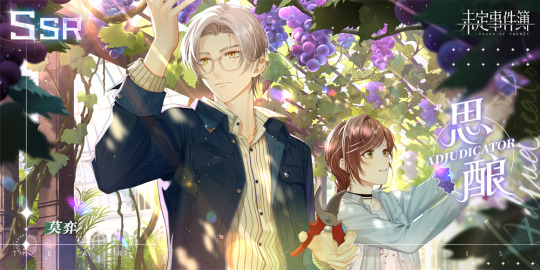
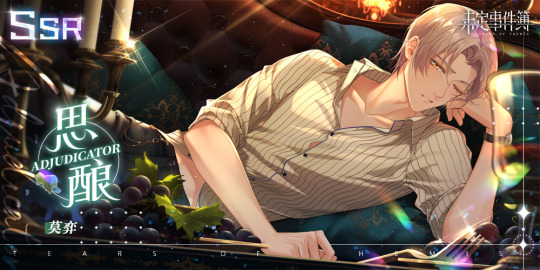
guess who got seduced by vyn into translating another card story -_-
i didn’t plan on doing this, but after reading the story, there’s too much juicy information for me to just let it go. also, it felt too appropriate as a follow-up to electrifying night. again, PLEASE LET ME KNOW IF AN ENGLISH TRANSLATION OF THIS CARD ALREADY EXISTS.
disclaimer: this is a fan translation and i am not fluent in chinese, so keep in mind that there will be mistakes. feel free to let me know if you have questions, concerns, or comments.
do not repost without explicit permission. if you want to quote this or reference small parts of the translation, credit and link back to me.
more specific notes under the cut.
notes:
The title of the card has been translated as “Brewing Thoughts” by tiramisiyu. I also think “Fermenting Thoughts” would work.
Most proper nouns and location names are just the romanization of the Chinese characters, or my best guess. These will almost certainly be wrong, and I’ve included the original names in the endnotes for reference.
The major exception is “Porto Gundy”, which is based on jokertrap-ran’s translations of Vyn’s RRG route (their ToT masterlist is here).
Note that Porto Gundy’s original name ( 波多艮第 boduo gendi ) is very similar to the transliterations for Bordeaux (波尔多 bo’erduo) and Burgundy (勃艮第 bogendi). Both are regions in France that are famous for their wines.
timestamps go along with the card video here. it’s not mine, please support the uploader Hikari Sherry Gaming by liking/commenting/subscribing.
[PART ONE]
(1:46) Outskirts of Porto Gundy
It was a beautiful spring day, and the rolling hills were lush and verdant. Vyn and I sped along in a car past this greenery.
On both sides of the road, rows of grape trellises stretched as far as the horizon, and tiny pale grape flowers bloomed among the young vines and leaves.
The refreshing breeze blew gently past, its sweet fragrance drifting by.
MC: No wonder Porto Gundy is the “wine center of the world”, there are so many grape vines! Who knows how many wineries are here.
Vyn: I’m not sure how many wineries are in this area. If you’re asking about the total number of wineries in Porto Gundy, there are probably at least four thousand.
MC: That many!
MC: Oh right, Dr. Richter, what’s the name of your friend’s winery?
Vyn: Feilu Winery.*
MC: Feilu?!
I had very limited knowledge of wine and wineries, but the name “Feilu Winery” was one that everyone recognized.
Feilu Winery was a world-class winery with the highest reputation and also the world record-holder for the highest ever auction price for alcohol.
MC: (I didn’t think that the friend Dr. Richter was talking about would turn out to be the owner of Feilu Winery…)
I couldn’t help but think back to a few days ago, when he first mentioned the winery.
(2:38 flashback) Vyn’s house
The day before we were to leave for Barosk*, I went to Vyn’s house to help him tidy up his garden.
MC: Dr. Richter, I’ve already checked all the sunshades, there’s no issues.
Vyn: Thanks. This way the sunshades and watering devices can all be controlled remotely.
Vyn: You’ve worked hard, I’ll go prepare some black tea.
Ding dong – just as Vyn finished speaking, the doorbell outside the garden rang.
Two sharply-dressed men were standing outside the garden looking at us. Behind them was a refrigerated vehicle.
When they saw Vyn approaching them, the older one of the two men stepped forward.
???: Is this the residence of Mr. Albert? May I ask if Mr. Albert is currently here?
Vyn: That would be me.
MC: Huh? Isn’t Dr. Richter’s English name “Vilhelm”?
As I was thinking that, I saw the middle-aged man respectfully make a slight bow toward Vyn.
Auction House Director: I’m the director of Sulunshi Auction House, I’m here to deliver some goods to you.
The young staff member next to him promptly took out a well-packaged box from the refrigerated vehicle behind him with care.
Auction House Director: 1992 Feilu Winery dry red wine, 1990 La Romanee-Conti dry red wine, and 2006 Chateau d’Yquem dry white wine.**
Auction House Director: Would you please find a suitable place to confirm these?
Vyn: There’s no need, here is fine.
Auction House Director: Here?
The auction house director was surprised for a few seconds, but then quickly nodded and had the staff member open up the box.
Vyn simply scanned the wine as the staff member opened up the box, then signed on the tablet that the director handed over.
The auction house director respectfully bowed again, then left with the staff.
MC: Dr. Richter, why did that man just now call you Albert? Isn’t your English name “Vilhelm”?
Vyn: Albert is my middle name.
MC: Oh, I see. That’s right, did you buy all of this wine?
Vyn: No, someone else sent this to me.
Although I didn’t understand wine, something wrapped and packaged so thoroughly, and delivered by the director, must be quite valuable.
Speaking of, before when I talked about a wine appraisal video with Vyn, he was very knowledgeable about wine.
And now, there was someone specially sending him precious wine…
MC: Dr. Richter, you really like wine, don’t you?
Vyn: I do enjoy winetasting.
MC: That’s what I thought!
MC: Dr. Richter, we’re going to be passing by Porto Gundy on our train trip!
MC: I heard there are lots of wineries there, tourists can visit and learn about how it’s made and winetasting.
MC: Unfortunately it’s not autumn right now, or else we’d be able to pick our own grapes and make wine from them.
Vyn: Are you interested in wineries and wine culture?
CHOICE: “Yes” or “No”
MC: Yeah! After all, Porto Gundy is known as “wine center of the world”.
MC: The past few days while I’ve been making travel plans, I kept coming across a lot about wineries, and after a while I became interested.
MC: And…
CHOICE: “Yes” or “No” (3:10 at this video; again, not mine, please support this uploader)
MC: I’m not particularly interested in it.
MC: It’s just that Porto Gundy is called the “wine center of the world”, it just seems like it’d be a shame if we didn’t visit a winery.
MC: And…
Vyn: And?
And, I also want to try out the things that you like.
MC: Nothing. The more things you understand, the more beautiful life becomes. I just want to learn some more.
Vyn: Then once we get to Porto Gundy, let’s go visit a winery.
Vyn: I just happen to have a friend there who owns one, I’ll give him a call.
(5:19 end flashback)
And so, when Vyn and I arrived at Porto Gundy, we paused our train trip.
Vyn’s friend was kind enough to specifically send a car to the train station to take us to his winery.
(5:28) Feilu Winery
After several turns, we saw a magnificent, classic castle not too far away.
Verdant ivy climbed up the walls surrounding the castle, and the wrought-iron gate was engraved with the family crest.
Our car slowly entered the gate and stopped in front of the castle.
A handsome young man in an impeccable suit smiled warmly at us as he walked over to us.
Winery Owner: Vilhelm, you’re finally here.
Vyn: Long time no see, Raphael.***
After a quick exchange of greetings, Vyn introduced me and Raphael to each other.
Vyn: Raphael has been my friend for years. This winery is his family business, and currently he’s managing it.
MC: (Dr. Richter has a really large circle of friends…)
MC: (Now that I think about it, there was Feilu wine in the box from before. Was it him who sent that do Dr. Richter?)
I concealed my curiosity and politely greeted Raphael.
Raphael: I’ve already arranged for your rooms and your butlers. You can rest first or tour the estate, whichever you prefer.
Vyn looked toward me.
Vyn: Are you tired?
MC: Not at all, are you?
Vyn: Me neither. Sitting on the train for so long made me want to take a stroll. Shall we walk together?
MC: Okay.
Seeing that we made our decision, Raphael instructed a nearby butler to take our luggage to our rooms. Then he smiled at Vyn.
Raphael: You’ve already been here so many times, you don’t need me to arrange for anyone to guide you around, right?
Vyn: Of course. How’s the greenhouse?
Raphael: I’ve already prepared what you asked for, you can directly go there.
Raphael: Miss MC, please explore the winery to your heart’s content. If you feel restricted in any way, it would be my failure as a host.
MC: Mr. Raphael, you’re too kind.
Raphael nodded at me with a smile, and left.
MC: Dr. Richter, is the greenhouse you mentioned just now…?
Vyn: It’s where they grow grapes that are out-of-season.
MC: Huh? Wineries grow grapes out-of-season?
Vyn: It’s a distinguishing feature of Feilu Winery, and also a hobby of the first owner.
Vyn: The greenhouse is divided into different areas by season, and each area has different varieties of wine grapes.
Vyn: That way, no matter which season a guest visits the winery in, they can learn about the differences between various kinds of wine by personally experiencing the grapes.
Vyn: The winemakers of this winery will sometimes also use these grapes for wine brewing experiments.
Vyn: Earlier when I called him on the phone, I confirmed with Raphael that there happened to be grapes ready for picking during the days we would be visiting.
Vyn: Even though it’s not autumn, we can still personally pick grapes and make wine.
Vyn: If you still want to learn winetasting, I consider myself a decent wine critic.
That time I was only mentioning it on a whim…
MC: Thank you, Dr. Richter.
Vyn: Thanking me makes it feel like we’re so distant. I’d rather you say, “I’m so happy.”
MC: Yes, I’m so happy!
Vyn: It’s my honor.
Vyn smiled and offered me his arm, motioning for us to walk arm-in-arm.
Vyn: Let’s go visit the greenhouse.
[END PART ONE]
[PART TWO]
*Locations: Feilu斐露Winery; Barosk 巴罗斯科 (baluosike); Sulunshi苏伦士Auction House
**Aside from Feilu Winery, the other two are real brands
***His name is 拉斐尔 (lafei’er) but I’m PRETTY SURE I got this transliteration right
109 notes
·
View notes